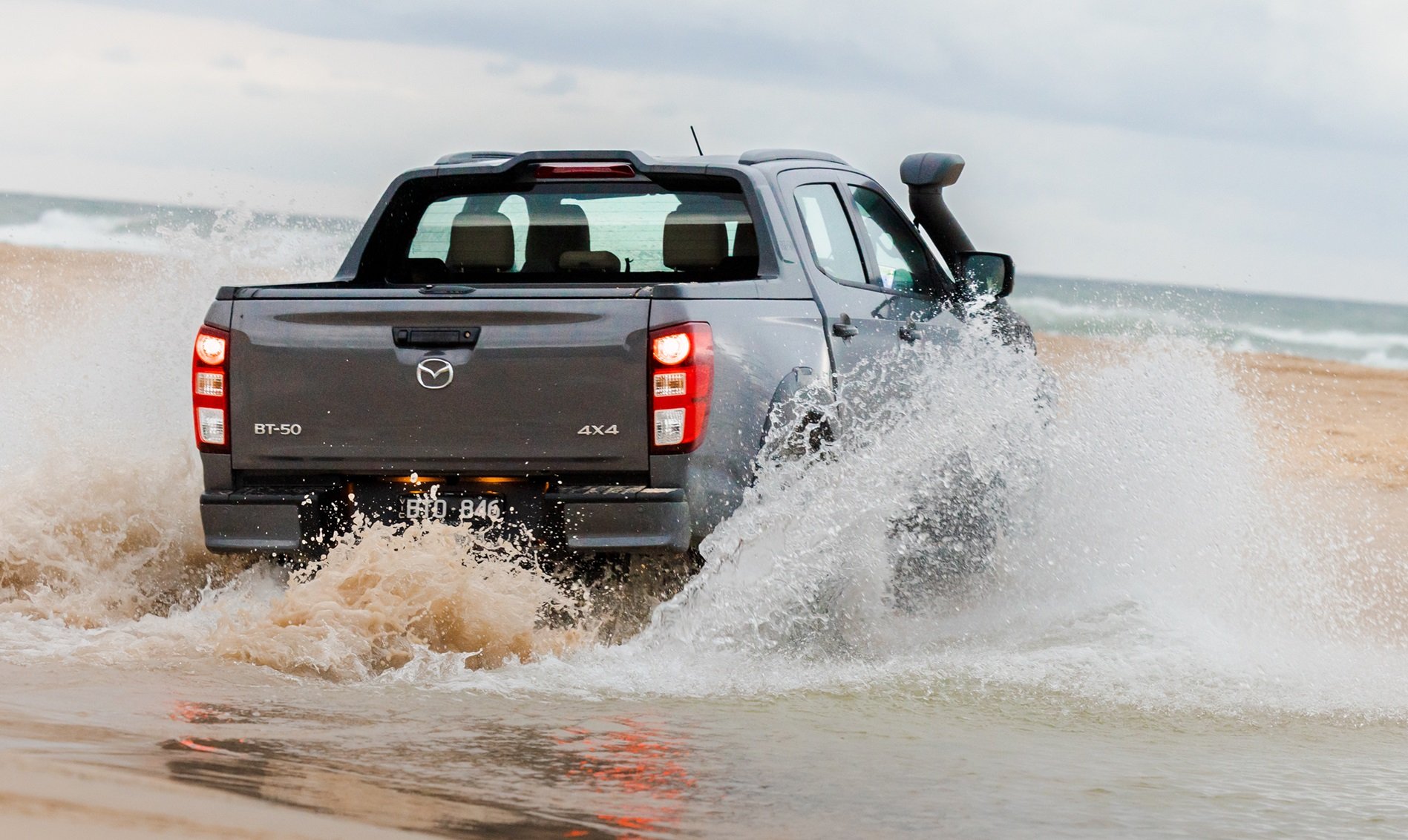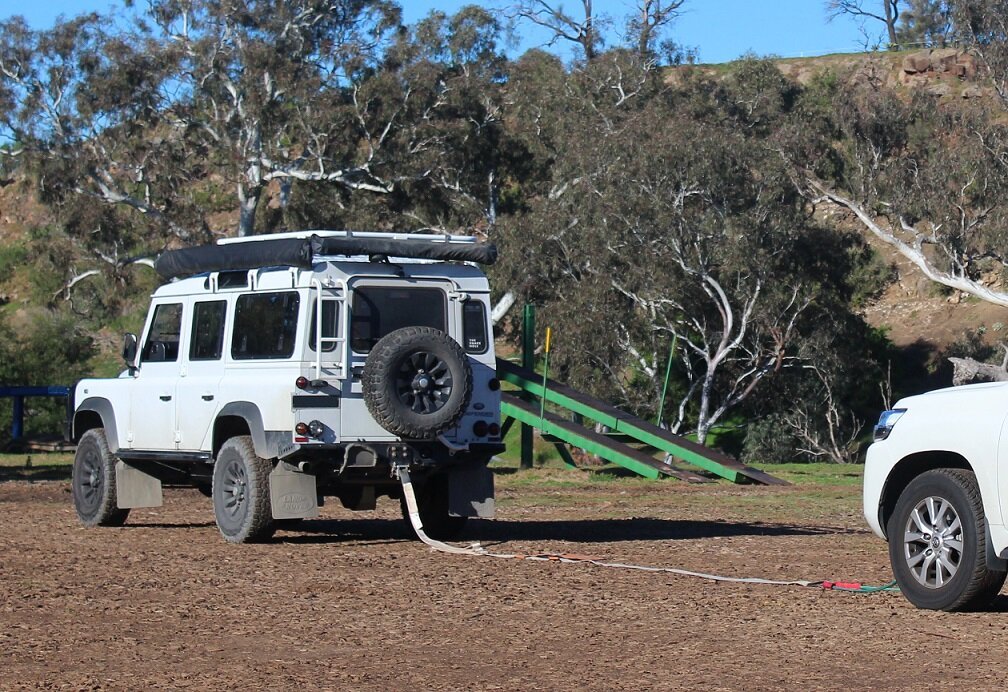Ultimate Off-Roading Guide
There’s an abundance of choice when buying a new 4X4, filling it with recovery gear and attaching as many accessories as possible. But the tsunami of information out there is overwhelming if you’re new or simply learned bad driving habits. This is your ultimate deep-dive into off-roading…
If you’re new to off-roading, or simply wish to expand your knowledge, this is your ultimate AutoExpert guide to leaving the highway, hitting the tracks - and getting home again in one piece.
Driving your vehicle off-road might be all the fun you can imagine, but there is an underlying danger that rarely gets discussed or taken seriously when it is.
Your attitude to off-road driving should be somewhat at odds with that of the typical dirt, sand and mud-loving off-road enthusiast. Off-roading is a necessary evil in many cases. Sure, you might end up thoroughly enjoying it as you get better at it, but ultimately you still need to do it to get somewhere for a reason, or get out of somewhere.
Treating this kind of driving environment with deliberation and caution is a good approach, because it makes you cognizant of what can go wrong - and there’s a lot that can go wrong in this extreme driving environment. After all, this is not doing the weekly grocery shopping or dropping the kids at footy practice.
But as a recreational pursuit in its own right - each to their own. It’s an excellent way to visit interesting places where sealed roads do not reach. However, it’s important to remember you are, potentially, hours from the nearest hospital, and could easily damage an otherwise perfectly functional machine while communing with nature in this way.
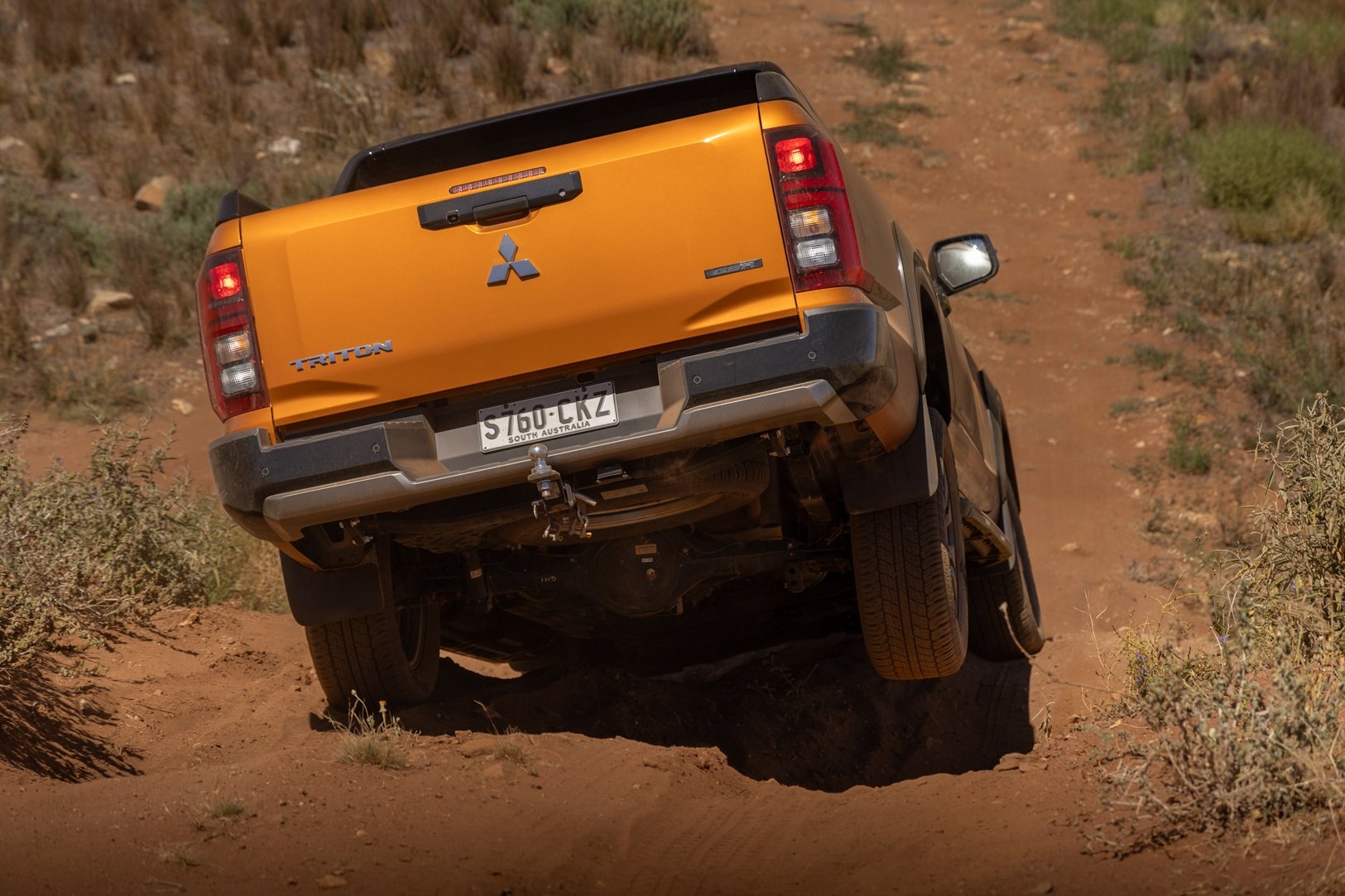
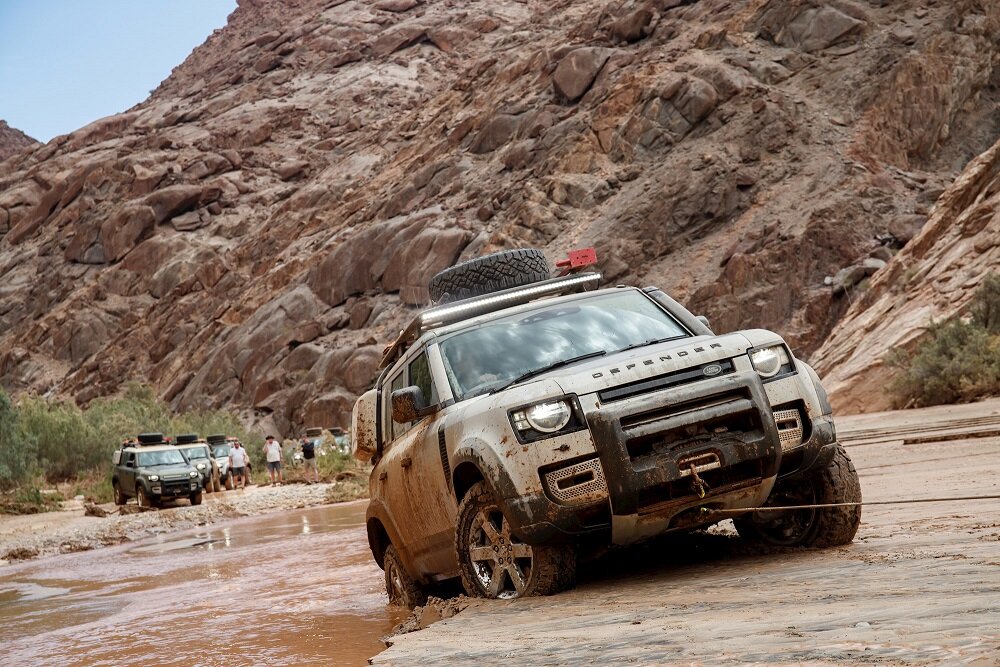
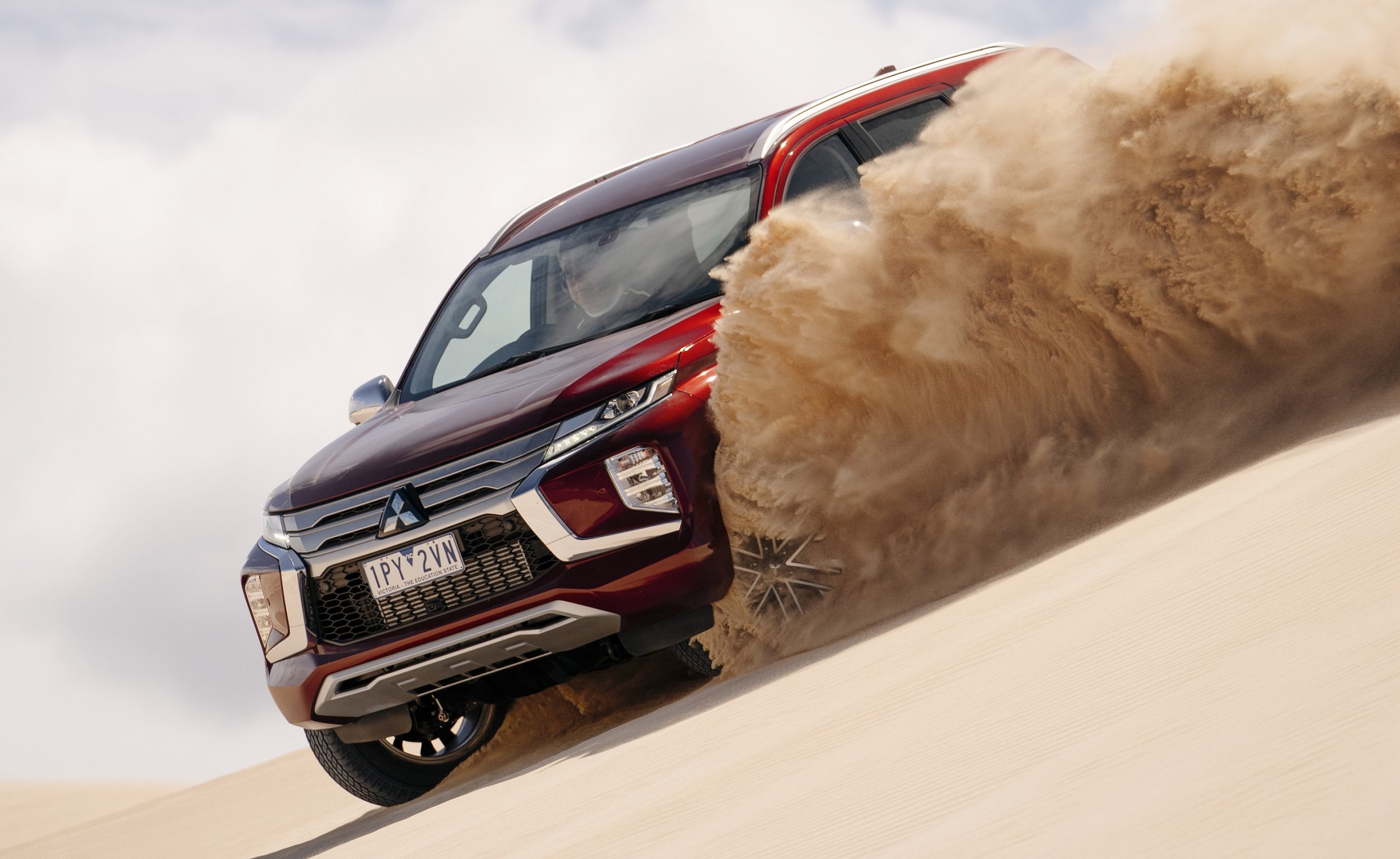
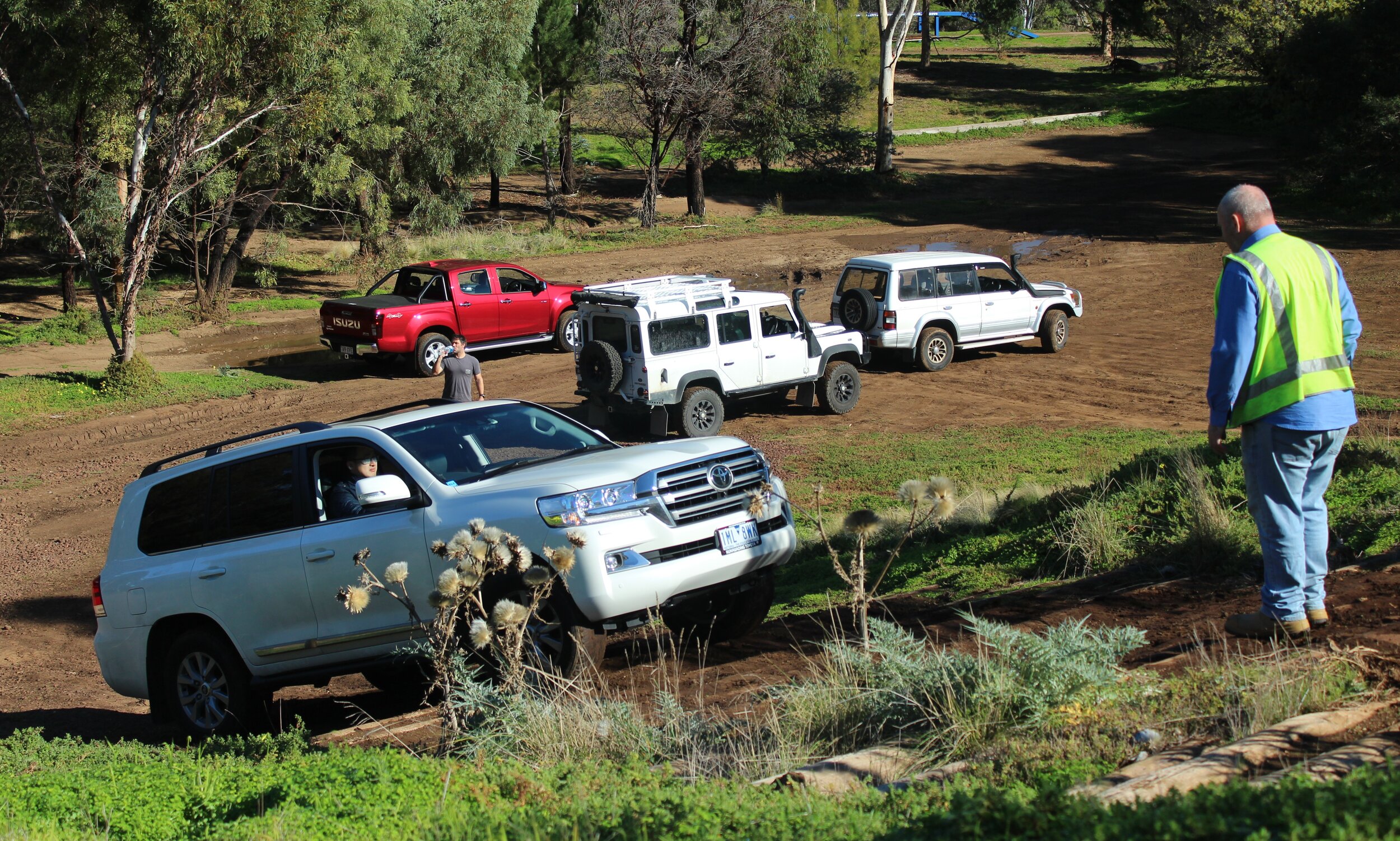
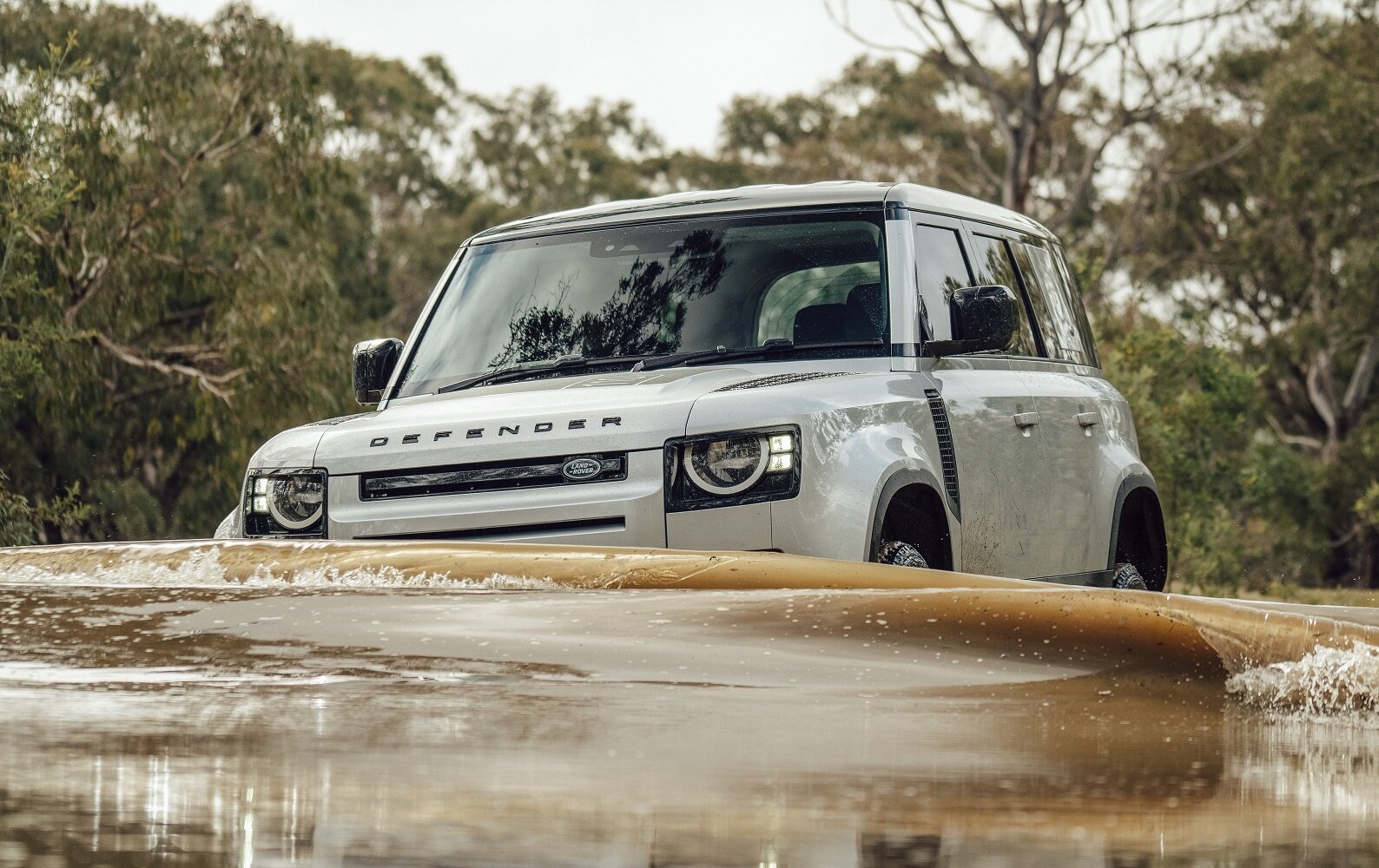
Some caveats before we jump right in: This report is mostly for novices, but also to help seasoned so-called experts fill in any knowledge gaps that may have emerged over the years.
Ideally, this extensive mega guide is for someone who just bought a ute or wagon with real off-road ability - something like a Pajero Sport, Prado, LandCruiser, Nissan Patrol, or a Triton, Ranger, Hilux, D-Max or BT-50. All very capable vehicles in their own right. But the dealer nor the carmaker is going to teach you how to use the vehicle properly. Certainly not for free anyway.
Even if you’re misguided and ended up in a Jeep or Land Rover, this report might still help you. In addition to all other advice, just make sure you also carry an EPIRB and a sat-phone - especially if you bought either brand of vehicle.
But if you do have a full-blown off-roading disorder and you’ve given your 4X4 a lift and fitted a set of enormous, expensive 35-inch mud-terrain tyres (on the driest inhabited continent on earth), then this information may not be that relevant to you. Although it’s not going to hurt to go over the basics.
Before heading out into the wilderness, consider joining your state or city’s local non-profit 4WD association and get qualified, competent training in a controlled environment where you can get some practice in without the stakes being too high. There are seasoned professional off-road drivers with actual registered training organisation who live and breathe this stuff, and whom also want to see you enjoy this kind of driving.
So, let’s now have a think about proper four-wheel drive systems, so that there's no ambiguity here. There are vehicles like Subaru Foresters and some Sportages/Tucsons and their bigger Sorento/SantaFe/Palisade stablemates that are ‘AWD’ AKA all-wheel drive - we are not talking about those.
An all-wheel drive system has a computer or a clutch-sensing type mechanism that apportions the drive front and rear. What you'll notice is that on a low-traction surface, like a poor dirt road or some slippery dirt road (or similar) there'll be a bit of drive shunting going on as the system tries to distribute drive to the most appropriate wheel or wheels.
These all-wheel drive systems were really pioneering designs made by the likes of Subaru and Audi, and their function was to integrate them into their rally competition programs because those all-wheel drive systems really do have positive benefits for performance driving on dirt roads - but this is not what you should be doing in your four-wheel drive. You’re not setting lap times on soggy dirt backroads in Wales, or on snowy forest-lined passes in Norway, or across red sandy desert trails in outback Australia.
Having said all that, let’s start by examining exactly what’s happening when you venture off the bitumen.
CONTENTS
Looking for specific information about off-roading? Click on these links below to skip ahead.
Check out the AutoExpert Ultimate Towing Guide >> for more on this.
DRIVING & SKILL
Knowing when to engage 4-wheel drive is the first basic skill you need to learn when going off-road.
So let's just think about why four-wheel drive was invented. Four-wheel drive was invented because sometimes two-wheel drive does not give you sufficient traction. The obvious answer to this question is to engage four-wheel drive at those times when you are negotiating terrain in which two-wheel drive would not give you sufficient tractive effort to proceed.
That would mean most dirt roads don't need you to apply four-wheel drive, so just don't engage it for most dirt-road driving, particularly good dirt road driving, because you just don't need it.
If you drive a Hilux or a D-Max or a BT-50 or a Patrol or something of that nature, they have a kind of agricultural four-wheel drive system where it's either:
two-wheel drive high
four-wheel drive high; or
four-wheel drive low
What happens here is happening in the transfer case. The transfer case is where you've got the crankshaft, connected to the gearbox, and then connected to the a transfer case for the purpose of taking the drive out of the gearbox and sending it down another shaft going forwards to the front axle. There’s also one going rearwards to the rear axle.
When you engage four-wheel drive in those vehicles, it locks the front and rear prop shafts together - it synchronizes them - and now they must turn at the same rate. If you are on a high-traction surface like bitumen or good dirt, this is a really bad idea because the front end of the car and the rear end of the car go through different arcs as they go around a corner.
This means the prop shafts are travelling different distances and that means the shafts want to turn at different rates, but they can't. Why? Because they're locked together. This is what causes great internal stresses inside the transfer case. It’s called transmission wind up or transmission ‘binding’.
You can experience it for yourself, if you like. Just engage 4WD and try to do a U-turn at a big intersection. You probably won't break something immediately, but just do it gently and you'll feel it and possibly hear it. There'll be a lot of complaining from the driveline and it'll be basically the driveline yelling, ‘Don't do this to me, it's bad!’
You need to avoid this phenomenon to also to inflect minimal premature wear on those components, even if you don’t necessarily bind-up the transmission. The bottom line is that any time there's a high traction environment, you run the risk of damaging the transmission by engaging four-wheel drive too early.
So the question is what dirt roads do you apply four-wheel drive on.
Answer: Four-wheel drive is only for the really slippery bits. So if you're driving along on a decent dirt road and you come across a big muddy bit, or a big patch of bull dust or a sandy section or something of that nature, then usually you will see that coming up ahead. This is the point you might want to shift on-the-fly to four wheel drive (if your vehicle can do that, otherwise do it stationary with space to build up some momentum).
Reason for shifting for 4H on-the-fly is because you might need the extra traction and kinetic energy in the vehicle in that situation. But on a good dirt road, just drive in two-wheel drive.
Now, if you’re a complete novice (or a motoring journalist and you don't give a damn about the transmission durability of the vehicle, because it’s not your vehicle) you can engage four-wheel drive on some pretty good dirt roads (even average ones) and what you'll notice is that the vehicle is a little bit more composed thanks to drive being split front and rear.
But the problem with doing that in your own car is that you increase the wear rate on the gears in the transfer case. If it is actually your vehicle, you probably don't want to do that so just drive more conservatively on good dirt roads (in 2WD) because you're not competing for the Paris-Dakar, so just take it easy.
You should be driving conservatively on a dirt road and engaging four-wheel drive when the conditions deteriorate up ahead.
In four-wheel drives, there’s also the low range transfer case we should talk about.
LOW RANGE
If you're a virgin on this kind of thing, low range or ‘4L’ as it’s usually denoted in the vehicle, is actually two things.
First, it's a lower gearing ratio which means that it can only operate up to a certain road-speed. For example, first gear in high range (4H or 2H) which you'd be familiar with when your car takes off as an automatic transmission (or when you select first gear manually in a manual transmission) - you know how the vehicle feels.
Well, that's approximately equivalent to third gear in low-range. This means the first thing that you get with low-range is another two lower gears. Having this means you can travel much slower in sketchy terrain, without stalling the engine, essentially.
In other words, you can travel at crawl speed on rough terrain like over rocks and things where there's a risk of damage you want to creep through by travelling slower in that situation. You want this because you might ned to make steering inputs which you cannot do if you’re moving too quickly; or perhaps you want the body remaining as neutral as possible on the suspension.
But you also want to avoid stalling the engine while also getting a lot more torque at the wheels, because the function of gearing is to juggle the rotational speed and the torque available.
You've got the three variables: torque, speed and power. Power, which comes out of the engine, is multiplied by all of the gearing to give you rotational speed and torque (which is tractive effort). The lower the gearing the more tractive effort you’ve got available, so in low-range second-gear, for example, you can travel up a really steep hill with low throttle inputs, at low speed, which reduces all kinds of potential for vehicle damage and it's actually quite a gentle, pleasant experience.
Whereas if you only had high range you probably wouldn't have enough gearing reduction to give you the drive to cope with the angle, particularly on the steeper rock shelf sections that you might encounter. You might have to take a run up at it to maintain an appropriate speed to keep traveling forward without stalling the engine, all of which leads to opening the door to damage.
Also, when you're going downhill, on a steep high-traction slope that is particularly sketchy, you can select low-range and first gear, take your foot off everything and the multiplication of torque gives you a great deal of engine braking, like reverse tractive effort. So the vehicle should just walk down the hill slowly, in low-range first-gear, in the way that it simply would not in high-range first-gear.
This is not a substitute for proper four-wheel drive training which you absolutely should get before you do any of this stuff, because it's really good to sit with someone who's got some experience and get some actual hands-on appreciation for what is a good idea and what is a bad idea. When you get into that environment, plenty of things won't make sense, you can become overwhelmed very quickly and you'll need some guidance.
.
MODIFY YOUR SOFTWARE
To improve the vehicle’s capability off-road, it doesn't need mechanical, digital or electrical modification - you need a software upgrade. Here’s why…
The same phenomena happens every weekend at race tracks right around the country. You've got all of these men and women who need to make their race car go faster. They can spend thousands of bucks making their car potentially faster by replacing parts with carbon fibre, hotting up the engine somehow, but in its current state of trim and tune, the driver is unable to milk it for all it's worth at every point on the track.
Obviously the easiest way to go faster around the track is: software upgrade for the driver. Only after you’ve extracted every ounce of current-state tune do you then seek modifications.
Most people don't think like that, certainly most newbie 4X4 drivers don't think like that. When should you modify your 4WD?
Don’t go on forums and listen to bad advice from other beard-strokers who are usually people who can't really drive properly either.
This is why I might seem anti-modifications, because frankly modifications are not a first resort - they're the last resort. If you buy a vehicle and you discover that you need it to do something and it is flat out incapable of doing that, then yeah, okay: modify it.
But you are rolling the dice. There's a set of potential outcomes that come with that modification and you better hope it's going to be worth it. This is a pretty serious door to open and step through.
If you're not thinking about the full extent to which the accessories are going to be used in a quantifiable way, if you’re not thinking about the consequences that could flow in a worst case scenario, you could end up with a two-tonne garden ornament.
A carmaker probably doesn't know for sure that the failure of the engine is due to the throttle controller or whatever accessory you fit, but they are don’t need to because they are in the perfect position to claim that, and they haven't engineered themselves into this position - you've done it for them by fitting the accessory that they can argue is not needed or could potentially cause a problem.
It’s a similar situation in fitting bullbars to your 4WD for safety (we’ll get to that).
When there's a choice, don't drive at dawn and dusk because this is the time a when human eyesight is compromised. If you must drive at those times, then drive at a reduced speed. So drop back to 80 or something instead of 100, and that really does slash your stopping distance in an emergency.
If you're doing 80, it's going to take you about one third less distance to stop because small differences in travel speed make a huge difference to stopping distance. This is because of the relationship between speed and energy. Obviously, energy is proportional to the square of speed - and you've got to bleed the energy away to come to a stop.
Do an advanced driving course, just the basic Level 1 Car Control course, at a racetrack, and take instruction from somebody who actually knows how to drive. You will learn a bunch of things that you will take with you everywhere, and it'll be an advantage every time you drive a car, not just when you’re off-roading.
In Australia, we have this curious mentality where a bullbar is perceived as the solution to hitting a kangaroo. Except the problem with that is you still hit the kangaroo. The solution to hitting a kangaroo is: learn how not to hit one. It's really simple.
The first time most people try to execute their first emergency stop or an emergency swerve is during an emergency. That’s the wrong time to be learning how to perfect this manoeuvre. Airline pilots do not train to land planes with dual engine failure when it happens for the first time - they do it dozens of times in the simulator until it becomes second nature.
Learning to avoid kangaroos by learning how to brake and swerve is the same driving scenario as learning to avoid hitting pedestrians or trees. Become a better driver naturally and you’ll instinctively become better at avoiding hitting anything while driving.
.
CHOOSING THE RIGHT VEHICLE
Buying a new 4X4 ute or SUV/wagon: Start with the right mindset
Approach the purchase of a new 4X4 like getting married. You've got to live with and appreciate the things that you like about the 4X4, and you've got to tolerate the things that you don't like.
If you think you’re just going to fix things that you don't like about your 4X4, that's a fool's errand because hopefully you've chosen, more or less, the right vehicle to begin with. It's got to have more things you like than things you don't.
Therefore it's easier just to be grateful for the the features like and capabilities you have, and accept the things you don’t like about it.
Here's the thing with buying any of these modern utes like Hiluxes, Rangers, BT-50 and D-Maxes, Navaras and Tritons, and even shitbox Amaroks - they're all light duty vehicles.
This cannot be stressed enough: LIGHT. DUTY.
Keep saying it to yourself. Light duty vehicles.
If you're thinking about your ute in the context of it being ‘your truck’, you need to wake up. Go out and look at a real truck. They're not the same thing. Not even close.
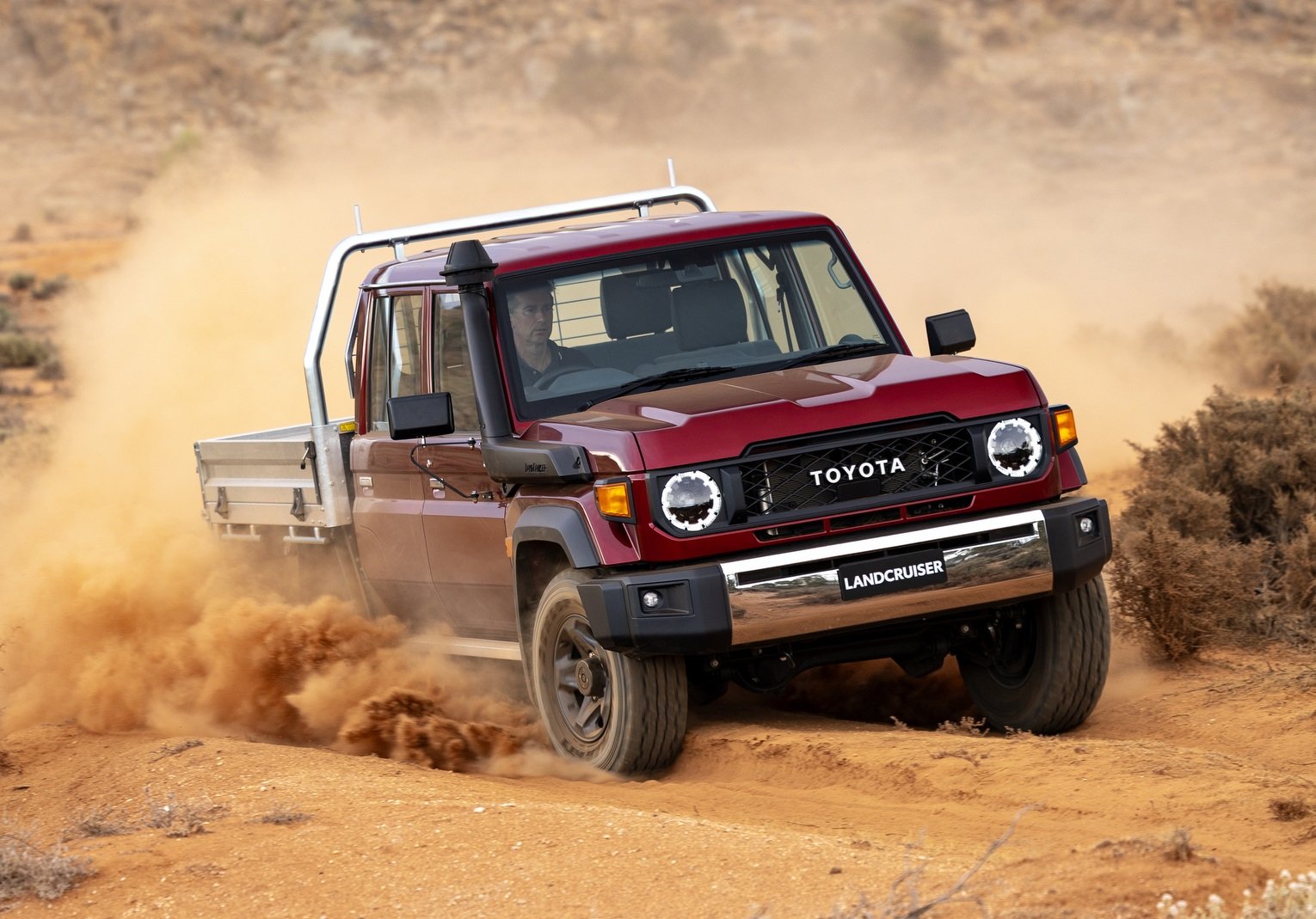

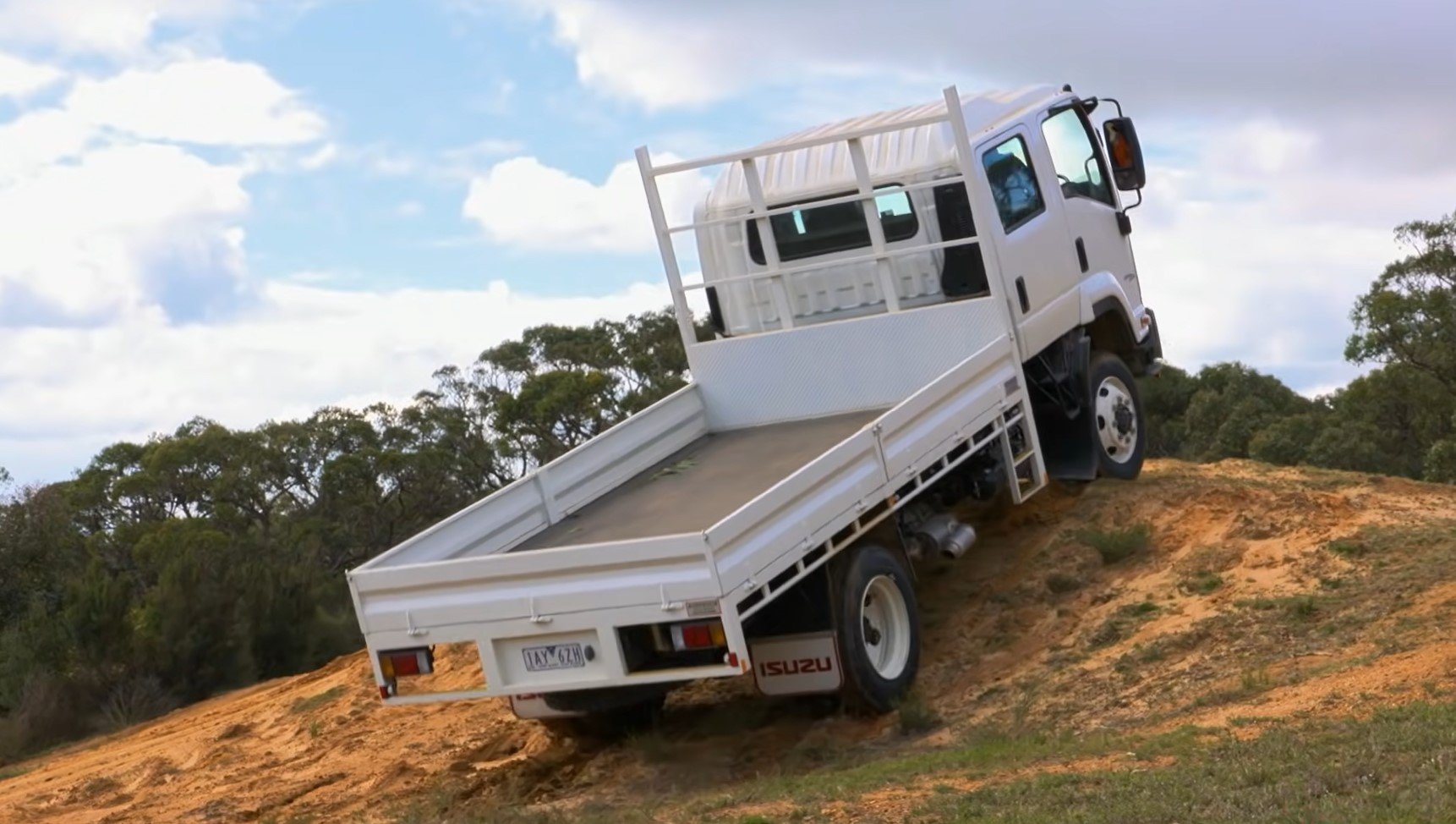
Your light-duty 4x4 dual cab pickup is about to get caught in the crossfire and you are doing this to it, principally, because severity of operation is the enemy of reliability - and you want both, apparently. Yet they are mutually exclusive.
Reliability is always compromised when operational severity increases. That's just how physics works.
These kinds of vehicles, like dual-cab utes and 4X4 wagons etc., frankly, are not designed to be beaten endlessly at the limits of conflicting capabilities. The limit of off-road ability + limit of payload capacity = accelerated wear and tear; shortened life, essentially.
It’s also a really great way to break something expensive and or end up parked on the roof.
Unfortunately, lots of people turn their utes into the pimp's Cadillac of 4X4s which is a recipe to blow a lot of cash either overloading these vehicles, or limit-loading them, and thus engineering out all the latent reliability the vehicles possess off the showroom floor.
If you max out the payload and then max out the severity of the usage, everything is going to break sooner - and it will be a pig to drive.
So which four-wheel drive vehicle should you buy? The one that suits the task. This means you need to ask yourself a bunch of serious, logical and realistic questions about what your intentions are - and overlay them with the reality of what it’s actually going to be used for.
Do you want a ute or a wagon? How do you intend to use this vehicle on your adventures? Will it be primarily a long-haul towing platform that needs only light off-road capability? How many seats does it need?
When you get home, how will the vehicle need to fit with your regular life?
Buying your new 4X4 ute and immediately fantasising about what aftermarket equipment and accessories you’d like to attach to it.
Some of the most common early modifications you’ll probably consider are wheels and tyres, suspension lifts and you’ll get an itch to fiddle with the engine. A bullbar is also quite likely on your dream mods list.
It’s an illness affecting a great many prospective new 4WD buyers. So which ones should you consider and which modifications should you ditch completely?
You need what’s called empirical evidence, which just means observational data. You get observational data by going into the field, so to speak, and observing whether 65 or 70 series tyres are going to be inadequate or adequate or just good enough.
If you change them without experiencing the vehicle in the field, you’re just wasting money solving a problem you haven’t fully understood. So get the vehicle standard, put it in the field and see what lets it down.
It could simply be that the road-biased tyres that it comes with as standard simply fill up with whatever filth is on the track, like muddy clay, which just clogs up the tread so you’re essentially driving on a set of slicks that limits the performance. In this case, the obvious thing to do is just change the tyres for a more aggressive set of all-terrain or mud-terrain tyres with better rough-road capability.
That's an option you can very easily undo, without having to drastically change the vehicle. And you would be quite surprised how capable a typical, standard 4X4 is on all-terrain tyres with a few PSI drained out.
.
MODIFICATIONS & ACCESSORIES
Most people grossly underestimate just how easily even a seemingly innocuous aftermarket modification can destroy your 4x4's new vehicle warranty.
After this report, you will not be able to claim that you had absolutely no idea that such a thing could even happen.
If you are that quintessential beard-stroking blue singlet and safety thong wearing 4x4 adventurer who is about to take delivery of a brand new 4x4, there’s a good chance you’re getting equally excited just thinking about all of the modifications you’re planning to make.
If you’re intending to just rock up at your local ARB dealer and let them loose, this is a stark warning to reconsider, because according to the 4X4 enthusiast media, standard off-road vehicles are crap and you simply must make them ‘right’ before you can drive them across the Simpson Desert or to Cape York.
I have seen manufacturers do this time and time again. I have even seen a manufacturer arc-up and refuse to even do the consumer law warranty thing over a lightbar that they claimed blocked air flow to the turbocharger which caused the turbo to fail.
Now, I don't know if that's bullshit or not, but the problem for you as the consumer bunny with this problem is that there are three parties to this situation. There's the aftermarket guy, the carmaker/brand/importer, and there’s you, the dude or dudette who owns the car with the blown up engine.
But I'd suggest that only one of those parties actually has a problem. It's not the aftermarket beneficiary, nor the carmaker. It’s the party with the blown-up engine. The other two parties have only one main objective, to deny any liability. This then puts the burden of proof back on you.
Modifications are a choice. I might often seem very anti-modification, but I'm only ‘anti-modification’ because people do this wrong. They treat modifying the vehicle as an absolute priority instead of a necessity to overcome or solve a problem.
Vehicle modification is treated like something you're mandated to do before you can drive it up your own driveway. But nothing could be further from the truth.
When you go four-wheel driving - and I've done a shitload of four-wheel driving: Canning Stock Route, Cape York, crossed the Simpson Desert, Gun Barrel Highway etc. - I'm amazed at how far a standard four-wheel drive can go, how capable they are out of the blocks.
Yeah, you could change the tyres. If you do change the tyres from “highway terrain” and buy a set of all-terrain tyres that are more off-road biased, then you'll probably go a lot further. For many people, that would be the only modification they ever need to do.
The weakest link, therefore, with most 4X4s is the nut hanging on to the steering wheel. That's what holds the vehicle back…
.
THROTTLE CONTROLLERS & ENGINE CHIPS
So, let’s say you’ve only driven about 8000 kilometres a year since 2018.
My first piece of advice here is do not fit that bloody throttle controller. What the hell are you fitting it for in the first place?
Of all of the modifications that you could possibly do to a 4X4, a throttle controller is among the most useless. Think of the name - a throttle controller is what you are for. That’s what your foot is for. There's really no benefit and as you will see, there is a hell of a lot to lose.
I've seen the writing on the wall for this dozens of times over the years; I've had the emails from people at their wit’s end because they are going properly under the bus.
Mazda's not going to help (and nor is any other carmaker) because they're going to claim that the modification caused the failure, a claim which they are quite qualified to make, however true or false the claim is, or how unknown the actual cause might be.
The throttle controller company is certainly not going to help because they're going to say it wasn't their product that caused the problem, and you're going to be stuck in the middle, which is never a pleasant situation.
This particular throttle controller probably costs $500 or something, I guess, and while that's not very much money, that's not actually the price our hero has paid. Is it? You can see clearly that the price of this modification is the evisceration of the warranty and the staggering further cost of a replacement engine, which is going to be in the vicinity of $20K or something.
Then, having replaced the engine, all you're going to get after you spend the 20 grand is the same vehicle that you had before - it’s not like a major upgrade - you're just going to get a basic BT-50 with a working engine that is now going to have a modification applied to the certification placard. And that could have ramifications for selling it on in the future.
.
SNORKELS
Bolting accessories to your 4X4 is fun. It gets you out of the house, you can appear to ‘know your stuff’ about how to off-road, and it makes your zombie truck look tough.
And let’s be honest here, fashion is the primary reason you want to fit a snorkel. Isn’t it?
Aussies adventure nuts like you do love your off-roaders - your Hiluxes and Rangers, your LandCruisers and Patrols, the odd Prado, and plenty of Navaras with P-plates duct-taped to the tailgate.
Questions about snorkels come up alot. So let’s myth-bust the crap out of snorkels, because if you have a 4WD, you’re probably having wet dreams about fitting one. Your mates have almost certainly told you you need a snorkel. But do you, realy?
Why fit one?
The only logically objective justification I can see for fitting a snorkel is: you want to drive through very deep water without destroying the engine. Meaning, water deeper than the official wading depth of the vehicle. It’s in the handbook, dude.
For example, a Ranger has an official wading depth of 800mm. That’s pretty deep. Especially if it’s flowing.
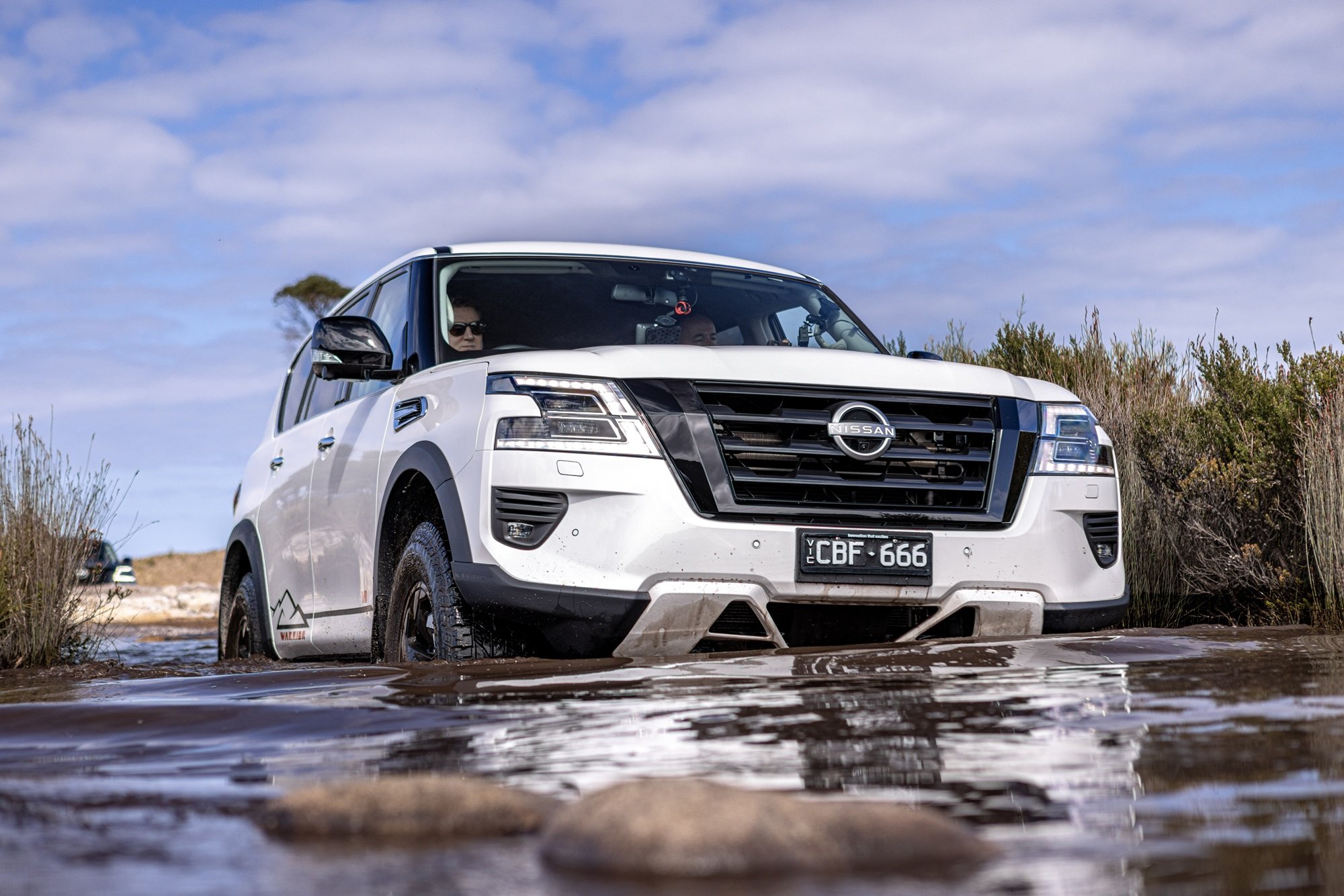
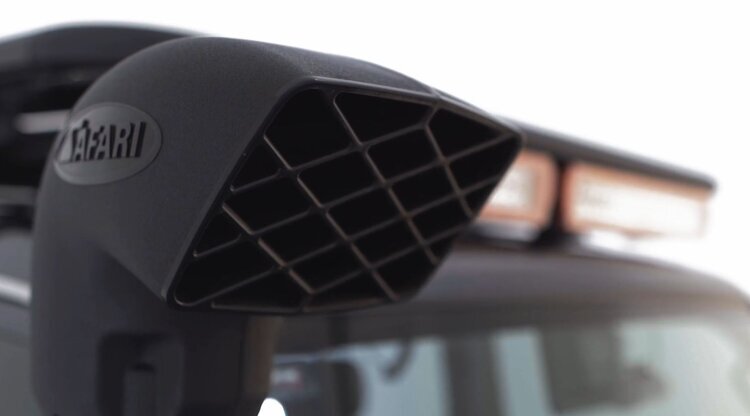
If you’re a water-driving virgin, it works like this: Driving through water should be a last resort, of necessity. But some chaps think it’s fun to do as often as possible.
Engines are meant to suck air. The engine air inlet in a 4X4 is in the front guard or under the bonnet, up the top, at the front, commonly. If you breach the handbook’s limits and drive into sufficiently deep water and submerge the air inlet, the engine sucks water.
Water is incompressible, inconveniently. So if you get water in the combustion chamber at roughly 2000 rpm, or something, the valves close and then the piston (which is expecting a nice, soft cushion of squishy air) slams instead into a wall of incompressible water. Deafening silence to follow.
This is called a ‘hydraulic lock’ or a ‘hydrolock’ - and it’s going to cost you about $15,000 or thereabouts, because it bends the crank and rods and otherwise opens the Book of Revelation inside your engine. That’s bad.
So, the snorkel is basically an elevated air intake designed to mitigate this risk. And if you’re a full-on blue-singlet adventurer … with a lifetime all-seasons pass to Dingo Piss Creek. OK - fit one, dude. Approved. You actually need this.
For everyone else: What an emphatic waste of cash.
So, three allegations are typically made here about snorkels: Higher air intake, cooler air and cleaner air. A snorkel is definitely higher - agreed. On the other two, not so much.
Many motor magazines will make claims about snorkels when they don’t fully understand how they work.
We’re talking about waist height versus head height height. Standard 4X4 air intakes are waist high, roughly. Snorkels are near the roof. That’s a difference of, basically, the height of the windscreen. What’s that, roughly half a metre? Three-quarters of a metre? Is the air really going to be significantly cooler 750 millimetres above the bonnet?
Let’s not forget, if you fit a snorkel, you’re going to suck that air subsequently through a metal (or black plastic tube) that is basically just baking continuously in the sun. So what’s it at? 70 degrees Celcius?
And of course, if the wind is blowing or you’re following a vehicle in front, the air is all mixed up and height-based temperature gradients just won’t exist. So to me that just seems like a somewhat bullshit claim. Cooler. Really? I suppose I could be wrong, but I’m not seeing it.
As for less dust, the standard air intake location and the snorkel intake both are equally bereft of dust, for the majority of their use, even on a pretty dusty road, because unless you live next to the biggest, dustiest national park, you have to drive a significant distance on-road to get there.
Plus, it’s generally a blocked air filter, poor seals around the airbox, or fatigue holes in the air intake plumbing which would allow dust ingress. In any of these instances, a snorkel isn’t curing the problem. So for the majority of your time reaching this dust bowl, the snorkel isn’t adding any benefit.
And of course, if you were driving metaphorically right up the bottom of a vehicle in front of you on a road such as this, your whole off-road shitbox would be more or less equally enveloped in dust. So air cleanliness isn’t being improved by snorkelization.
There’s not much evidence for these claims about cooler and cleaner air.
Snorkels typically don’t filter air, despite many claims in the media and marketing that they somehow do filter air. They just suck air. Cleaner air doesn’t really affect performance, either, because inlet air is filtered, and as long as you service the filter appropriately, engine performance remains unaffected.
There’s no evidence that snorkels reliably deliver air that is significantly cleaner or cooler in most operating scenarios.
Big Red is of course an affectionate, common nickname for a god-forsaken 40-metre-high pile of red sand on the eastern edge of a proud Australian wasteland called the Simpson’s Desert.
You will probably want to go there, and you probably already have plans. Spoiler alert: It’s a big red pile of sand and dust. You just saved thousands of dollars. You’re welcome.
Unfortunately, visiting the desert is a bad example of marketing snorkels, because snorkels have only one indisputable benefit: protecting the engine in over-the-bonnet water crossings. You’re unlikely to find one of those when you are “attempting to mount Big Red”.
Toyota has already designed an air intake that seems perfectly capable of delivering clean air to the engine...
Dealer of aftermarket?
The aftermarket industry is so keen to tell you it won’t affect the warranty. But I’d suggest if you fit a snorkel, drive into deep water and hydro-lock your engine - forget all about a warranty claim from the carmaker.
They’ll simply say: Kindly refer to page 453 - wading depth. You exceeded it, dude. That’ll be $22,000 including fitting and GST. Will that be cash, or defibrillator?
You might be able to come after the aftermarket dudes - but you’d have to prove the product was defective, or the installation was. Good luck with that. Ultimately it could prove to be a pretty expensive creek crossing.
The one advantage of having the dealer fit a genuine snorkel is that, for consumer law purposes, you’ll be coming after the dealer for warranty and/or consumer law issues. You won’t have two competing parties, each trying desperately to brush you off onto the other.
Ram-air?
This is where the 4WD aftermarket industry and its seemingly bullshit claims are perpetuated by journalists who have no idea or who are working under advertising incentives where criticisms are simply not tolerated.
Snorkel sellers love to discuss increased airflow. Roger Ramjet’s air effect. Hero of our nation. They just love it. The proton energy pill of snorkelization when you don’t have a river to cross.
The marketing manager for the popular Safari Snorkel brand once claimed that Safari’s ‘Armax’ snorkel models increased airflow by up to a 40 per cent.
Let’s not forget that ‘up to’ 40 per cent also includes zero improvement or even a net reduction. Like, it just means ‘not more than 40 per cent’. So there’s that.
But let’s be clear on this: Such claims are often presented so that the hapless punter focuses on the number, rather than any weasel-word caveats. The punter hears ‘up to 40 per cent’ but they actually compute ‘40’. And it is a fact that engines are generally limited by airflow. After all, the only thing a turbo adds is air.
So, if you could magically jam in 40 per cent more air at highway speeds, that would be awesome. Unfortunately, you’re also adding more than a metre of plumbing, and you’re asking the air to change direction through 270-odd degrees of total rotation. And most of the snorkel plumbing is effectively a convective heater if it’s a sunny day.
Air is a viscous fluid. It does not like flowing fast through a tube. Nor does it enjoy turning corners. So there’s that.
Problematically, there are side-facing intakes and forward facing intakes and even rear-facing intakes on popular snorkels - and they all seem to perform about the same, which is kind of interesting, to me. (Because the rear- and side-facing ones aren’t getting much Roger Ramjet effect, are they?)
And let’s not forget engines typically don’t need a re-map when you fit a snorkel. So there’s hardly a profound change in airflow happening. And - believe me - if you were adding 40 per cent more air, they probably would need a re-tune. And the stock injectors might not be able to keep up during high-speed overtaking manoeuvres, if airflow were increased by 40 per cent at high demand and revs.
And we haven’t really changed the turbo or the intercooler - and that mitigates rather a lot of what you do ‘upstream’ in any case.
Do you see what we’re getting at here? There isn’t a great flow increase into the engine from fitting a snorkel. Although, on that note, you could (and probably should) ask questions about whether snorkels actually manage to restrict airflow.
Snorkels for fashion
If you actually plan on doing the whole Hunt for Red October thing in your fine 4X4 wanking chariot, knock yourself out, dude. Fit a snorkel, and make sure they do a really, really good job sealing it. (Because a hydrolock is not fun - except of course if you see it happen to someone else.)
There are grown men who dream about this exact image...
And don’t forget to upgrade the engine fan - which is designed to suck air, and which can easily drag itself into the radiator if it sucks water. If you’ve ever wondered how to make a radiator core smoothie, that’s basically the recipe.
Remember to get breathers fitted (if you really must do this). So often they are overlooked. See, you can’t actually seal gearboxes, transfer cases and diffs. If you did, they’d pump oil out past the seals whenever they heat up. That’s bad.
So they’ve got these vents, called ‘breathers’ that allow air pressure inside the case to equalise with outside. Great idea - until you park your vehicle in Dingo Piss Creek.
When that happens, the breathers start to suck (because the components cool rapidly and so does the air inside, which shrinks). Thus they suck water, which then gets churned by the gears and emulsifies with the oil.
On the plus side: it turns an elegant cappuccino colour. On the minus side: that emulsion doesn’t lubricate the expensive parts all that well. So, you’d also want to extend the breathers, and increase the oil change frequency for those major driveline components, if you do the deep-water thing.
That’s the conclusion for hardcore off-roading nutjobs.
But you’ll notice there are many more snorkels out there in traffic than there are 4WDs doing the James Bond Lotus submarine thing, right? And, it’s understandable, but bolting on a snorkel to your fine 4X4 chariot is roughly the same as buying the same handbag as a celebrity.
You can convince yourself you’re getting better performance and cleaner, cooler air, but that’s just confirmation bias, dude.
In fact, overwhelmingly, for most people who fit one, a snorkel is nothing more than a fashion accessory.
Face facts, dude: You probably don’t need a snorkel even if you actually visit Dingo Piss Creek. But it is nice to have.
.
RECOVERY EQUIPMENT
You don’t need much equipment to start-out off-roading. Everybody has limited resources, so don’t buy yourself a whole bunch of crap you don’t need - yet.
Here are the essential basics you need to start your off-road adventuring without blowing the budget. It’s no good needing this stuff and not having it when you’re out there.
Long handled shovel or spade
It doesn’t need to be branded, or collapsible/folding, and it doesn’t need to be fancy. Just get a good quality one from your nearest hardware store; it’ll do just fine.
The long-handled shovel is massively underrated for off-road recovery. You can dig your way out of sand, you can reprofile the exits of ruts, or even remove malignant crap stuck under the vehicle.
A little bit of manual labour will get you out of most situations.
A bottle jack with substantial load rating
You can mount it under a variety of positions on the vehicle like diff housings, suspension mounting points, chassis rails. Pro tip: Don’t forget the handle!
Get a piece of solid metal checkerplate to evenly displace the bearing pressure (stress) the vehicle applies on the bottle jack, preventing the jack from being pushed down into the dirt, sand or mud.
Air compressor
Have a look at the Drivetech 4x4 Compressor Kit for starters >> But even a decent robust compressor is a good idea. However, a bigger kit with puncture repair is highly recommended, including a deflation tool for dropping your tyre pressures for deteriorating driving conditions.
A DIY repair kit alongside an air compressor is an end-to-end solution if you’re 4 hours from the nearest tyre repair joint. It’s all in the box.
A hammer and/or mallet. For hitting things, obviously.
Decent first aid kit.
And of course one decent length of high tensile drag chain can be the single most important and universal piece of recovery equipment you put in your recovery kit.
A long piece of chain will typically come set up for four-wheel driving with about five meters of chain, so about a car length. The primary concern people have is, are you going to stretch it, and then is it going to break, and does it have sufficient elastic strain energy to form a projectile that comes back through the glass at you or the poor bastard whom you are rescuing.
In most off-roading recovery situations where you’re rescuing a bogged comrade, and presuming you drive gently and not aggressively, the maximum tension you can exert on this chain is going to be two tonnes.
That's not nearly enough for it to acquire the kind of elastic strain energy that would do any damage, certainly not enough to break the chain or the hooks or the pins or anything of that nature - because you won’t be exceeding anything close to the working load limits of the chain.
At this point you might think using chain could break the shackle and that could become the projectile. Keep reading…
.
SHACKLES: Hard or soft?
Several people ask this question in the off-roading community, and if you don’t want to waste your life reading uninformed comments on social media, in community forums and talking smack around campfires with your equally unqualified mates, here’s the rub.
Hard shackles are better at 90 per cent of off-road recovery operations, but there is one significant scenario in which the soft shackle just eats the hard shackle for breakfast.
You can live without a soft shackle in your recovery kit - there’s a workaround for that particular scenario - but you should put four hard shackles in your recovery kit.
Two 4.7 tonne shackles and two 3.2 tonne shackles - the big ones are notionally ‘stronger’, obviously but the small ones fit into more physically space-restricted spots. And they’re both plenty strong, as you will soon see.
But how do they work, how should you use shackles correctly and how do you determine when to use a shackle - and which type should you use?
PART ONE
Shackles are very popular in 4WD recovery, but generally speaking, your average off-road driving enthusiast has no idea how they work at an intimate level.
The safe use of these shackles could be the difference between getting home alive or catastrophic failure. Which outcome would you prefer?
There’s two parts to this, right? First - the part about relative positives and negatives. Second - the part about myth-busting the bullshit of 4WD recovery. There’s a lot of that. See, shackles and other items - wire rope in winches, slings … things of that nature - are generally adapted from the hoisting industry (you know, cranes and such).
And the parts have been cobbled together to form a system for off-road recovery, which (kinda) works. If you take a shackle and a sling and a wire rope hoist and a hook, maybe a snatch block, you’re essentially looking at the load-bearing parts of a winch recovery.
And the way the numbers work, the way they are presented to you, and the bullshit claims made about some of the parts in particular - especially winches - needs addressing.
This is compounded by never really knowing what the actual loads are. See, if you want to put a tank under a giant crane, one generally knows exactly how much it weighs, and one can then put a hoisting package together so that the working load limit of each component is not exceeded. Recovery is not like that - there’s generally no way of knowing the loads.
It’s all quite confusing, frankly, if you don’t have engineering training or work in industry. So I’m gunna unpack some of that right now - the beer-garden physics of recovery.
For this report I got my Saber soft shackle from Sparesbox. About $60 - link in the description. I had a bunch of steel shackles lying around already. Who doesn’t? Steel shackles last (statistically) for eternity, which is almost as long as it’s been since I’ve had ‘it’ thrown at me with at least vestigial enthusiasm.
CONSIDER FOR YOUR RECOVERY KIT:
4.75-tonne Bow Shackle
14.7-tonne Saber Soft Shackle
17.0-tonne Saber Soft Shackle
PART TWO
The case for soft shackles has arrived.
If you’re monumentally stuck in sticky, sucky, wet sand below high-tide mark, where you need to recover a vehicle at great distance - because you can’t get too close - you can join a winch extension to your soft shackle.
The shock absorption of the snatch strap is high in this recovery. It’s made of nylon which loses stretch capacity when wet - so keep it dry - and in this situation, joining two straps together with a hard shackle is a bad, bad idea.
F = ma. There is an extreme projectile risk here using a hard shackle. You can simply loop your two straps together.
Or simply feed through your brilliant new soft shackle and you’re ready to begin your recovery and save Captain Quicksand from the jaws of the Indian/Pacific Ocean before the tide rolls in.
A very elegant solution indeed.
BRAIN STRAIN
Pet hate: “Strength” is a bullshit term, firstly, because it typically isn’t referred to in relation to something - when it breaks or when it’s safe to use it up to a certain point.
In the case of steel shackle versus soft shackle, the two designations of “strength” relate to exactly opposite things. When you look at 3.2 tonnes stamped on the small shackle and the 14,700kgs on the soft shackle, you’d look at the softer shackle and think it’s substantially stronger, even moreso than the big shackle.
I get how you might misconstrue this, but the 14.7 tonne rating for the soft shackle relates to when it starts to break. That’s its minimum failure load.
The hard shackles refer to the Working Load Limit, in industry. Having broken these kinds of shackles in a laboratory, I can tell you the factor of safety is about six or seven. So the baby shackle will break at around 20 tonnes. The large shackle will break at around 30 tonnes.
The WLL (working load limit) of the soft shackle simply isn’t stated. You don’t get that kind of data from the manufacturer.
Remember: There’s no standards or codes for 4WD recovery.
The steel shackle is also rated based on being used longitudinally, not laterally or ‘horizontally’, as you might describe it.
If you do use it laterally, the thread will strip out and the arms of the bow will arc outward and not have the same strength as opposed to being used longitudinally.
Typically, these shackles break on the edge of the thread on the pin because the V carved on the base of the thread acts as a load concentrator (in extreme situations, obviously).
If you want to think about when to use a steel or soft shackle, you have to think about the pros and cons.
We know the small steel shackle is stronger than the conventional soft shackle, in terms of failure point.
Cost:
It’s less than $20 for a steel shackle versus change from $60 for the soft shackle. Or there’s an even stronger 17-tonne soft shackle which gives you an even greater margin of safety.
Buoyancy:
Definitely a factor here, because a hard shackle will sink immediately in soft mud where a soft shackle will float on water or wet mud. However, the soft shackle will be far more inclined to simply float away if you’re not quick enough to recover it - and good luck not twisting your ankle on loose river rocks sprinting in your thongs.
Projectile risk:
This is a huge red-flag issue. If a soft shackle hits you at 100km/h in the head when it breaks, you’re probably gonna live to fight another day. Hard shackle hits you - it’s lights out, no afterwards. That’s the salient risk here.
So, do not put together a recovery kit with a likelihood of a shackle coming toward you at high speed - if yours is rusty, or bent or split in any way, throw it out.
Sharp edges:
Manufacturers of recovery points bolted up to your vehicle with a working load limit of about five tonnes, they have sharp edges in the context of load. They’re not razor sharp, but 90-degree edges laser cut and minimally radiused. If you put a soft shackle on one of those sharp edges, that is enough to cut them under high stress. The fibres of the soft shackle will fail earlier than their failure rating.
Warning: Make sure you check for damage under the sheath in case of frayed fibres, stretching etc. If it is damaged - bin it. Buy a new one. What you can’t see will kill you.
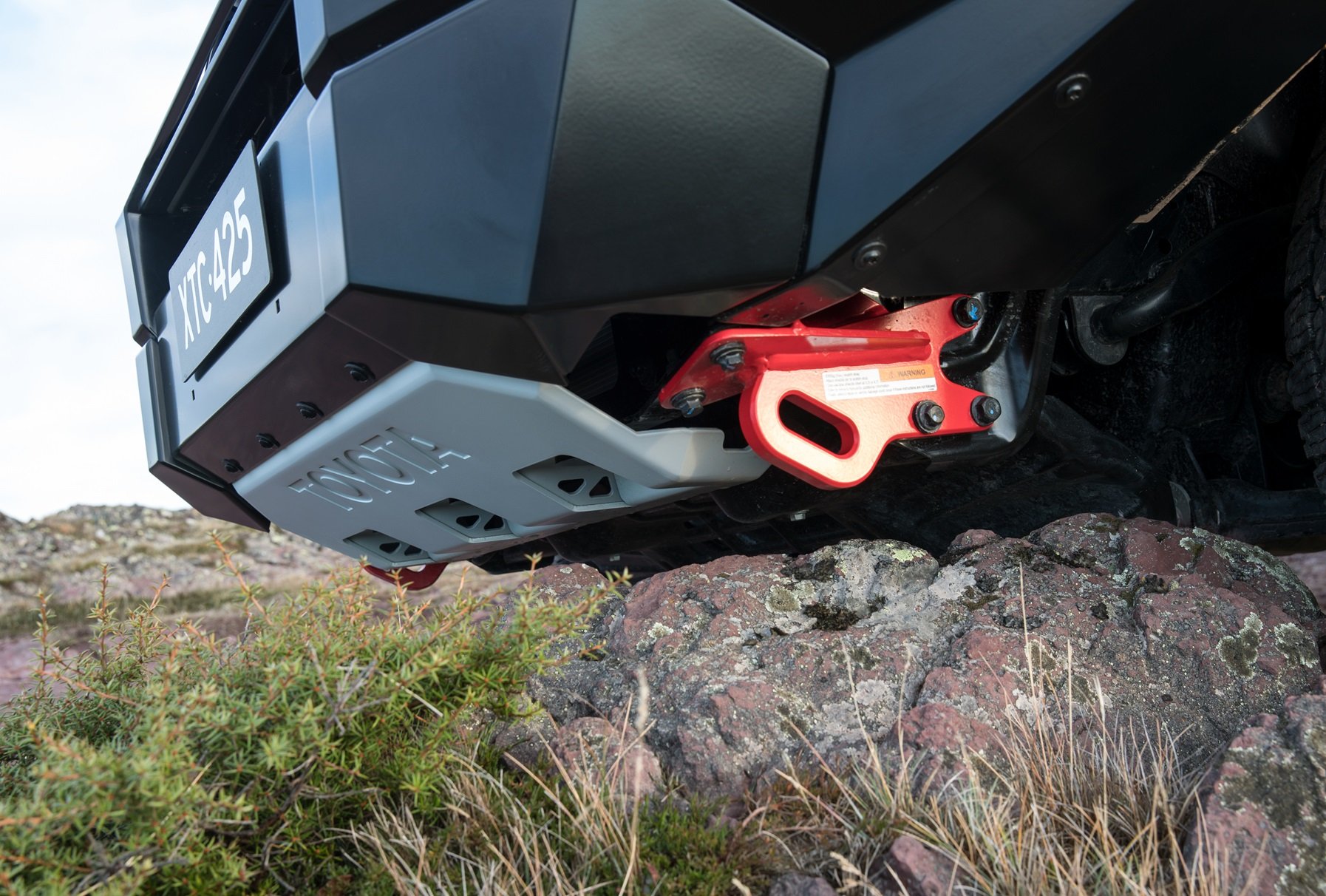
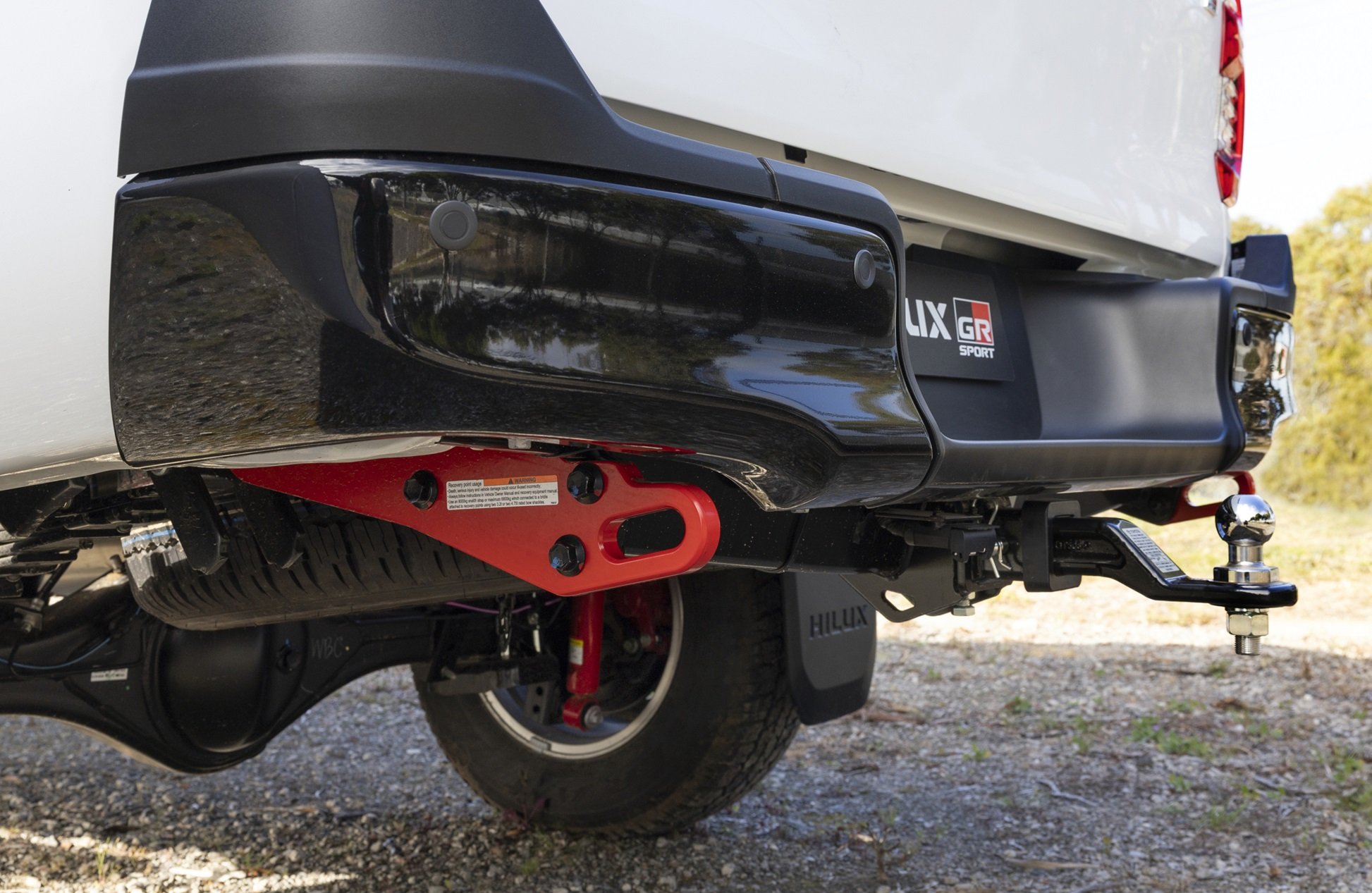
Overall durability:
Steel shackle wins every time. Soft shackles have a shelf life. The number of usage cycles you’ll put one through means it’s eventually gonna wear out.
Ease of use:
Both are pretty simple. With the steel bow shackle, put your hook or strap through the bow, screw up the pin, but do not use a tool to tighten the pin beyond finger-tight.
When you reach finger-tight, un-screw it half a turn. Because if you put 5t of load onto the mechanically-tightened pin thread, you’re likely to turn it even further under added load and you’ll never get it undone again.
The sheer in the pin is what holds the load.
Soft shackles have a tendency to pull the knot out, under extreme load. There are lots of cases where this happens, plenty of video out there.
So: Don’t use a damaged soft shackle, and make sure your application won’t break a steel shackle to avoid projectile risk.
Now you just need to figure out which situation suits which shackle…
Summary:
The case for soft shackles:
No sharp edges
High projectile risk for hard shackle
The case for steel shackles:
Everything else.
BEFORE PROCEEDING
Consider every recovery situation with extreme caution
Get training
.
SNATCH STRAPS
You need to consider the most common recovery scenario, with a snatch strap.
Firstly, snatch recovery is not an opportunity to be a ballistic dickhead. You need to be gentle. Otherwise you ramp up the risk of component failure, or injury to people, if something goes wrong.
In an environment of recovery with a snatch strap, you have a recovery vehicle, the stranded vehicle, a snatch strap and recovery points on both vehicles. In determining the projectile risk (to figure out which shackle to use), you need to find the weakest link in the recovery operation.
Typical recovery points are rated to about 5 tonnes working load limit - none of them say their failure limit of course. The 4.7-tonne bow shackle will fail at 30 tonnes, snatch straps like the ARB product fails at a minimum 8000kg (8 tonnes, obviously).
The snatch strap is the weakest link here. And they typically fail at the eye, where the stitching pulls apart. It fails incrementally, it gives you plenty of warning.
In this situation, where the strap fails, (and just to be clear, at this point, nobody should be standing anywhere near the strap or the vehicles in the recovery operation), the projectile risk is low because the shackle is not the weak link.
But the sharp edge risk mentioned earlier, that’s high because you’re using those lase-cut recovery points (most likely).
So hard shackle wins here.
If you come across another vehicle stranded and in need of recovery, but you find they don’t have proper recovery points, you’re certainly not going to turn them down of assistance out there, a thousand miles from Dingo Piss Hotel.
So you’re going to be forced to use their vehicle’s standard shipping tie-down points. Obviously this is less than ideal, but it’s the only option left to you. So it’s important to remember, again, be gentle.
But, if you have a tree protector strap, you can use this through both shipping tie-down, which will effectively half the load you put on each shipping point. But don’t use shipping points on a regular basis - that’ll end badly. The calibre of shipping points varies widely and you need to ethically help a stranger in an imperfect situation.
SNATCH BLOCK
Another hack you can do with physics, if you’re seriously stuck, is to use a snatch block.
Essentially, it’s just a pulley. You wind the cable out, go around the pulley, then anchor to the recovery point on your bullbar or vehicle chassis - wherever. What it does is double the effort or halve the load on the winch, essentially. But it does also halve your speed. Nothing’s free - laws of thermodynamics.
So you’ve still got your 20,000kg of load restraint capacity in your tree strap, you’ve got your tree still adequate (but not too big), your shackle can still stand 30 tonnes without breaking, your snatch block is different though because it has a sharp edge on it where the shackle goes through (so remember that), the snatch block has a minimum working load of 9000kg and fails at a minimum of 14,500kg (which isn’t much).
And then you’ve got your cable. The cable is the most likely piece to break, but long before that happens, the winch is going to run out of grunt. the battery will run out of grunt.
I can’t see the point of a soft shackle here.
UNDERSTANDING LOAD
Load restraint is something that does people’s heads in.
Typically, you’d think 12,000kg of load restraint plus 12,000kg on the other side of the strap going around the tree equals 24,000kgs pulling on the strap at the back of the tree.
Happily, it doesn’t. Thanks to Sir Isaac Newton’s third law of motion.
A 100kg man on the floor pushes down. 100kg of floor pushes back, otherwise man is going through the floor.
100kg man doing a chin up pulls down on the bar. The bar pulls up.
Your vehicle pulls on the winch cable or strap. And the strap/winch pulls back with exactly the same amount of load.
Using a tree protector is simply applying this same scenario between the vehicle and the tree and the strap.
In the case of the tree protector strap, it’s 12,000kg per side, but accounting for the fudge factor and angle, it’s 20,000kg of load restraint in play here.
You don’t have to understand or even agree, but you can still accept that it’s true. Because that’s how this works. #physics
.
WINCHING
If you’ve bought your first winch and got yourself suitably stuck, winching is a common form of self-recovery.
You’ve got the cable, the winch, the tree, and your tree-protecting strap.
Pro tip: Don’t get too big a tree for the strap. Once the angle on the strap exceeds about 120 degrees, the load is out of control because of the vector fudge factor. Get the angle as acute (sharp) as possible.
A good tree protector strap is rated to about 12,000kgs, with two arms rated at about 12,000kgs also, minus the fudge factor for the vector, with about 20,000kgs of total load restraint capacity built into the strap.
The 4.7-tonne big steel shackle’s gonna fail at about 30,000kgs.
The cable’s pretty weak. A Warn Zeon 12S which is Warn’s premium 12,000lbs winch, with a 9.5mm cable fails at about 14,400lbs (6550kgs). So the cable is much weaker than any of the upstream apparatus here. But the cable is protected by the winch because Warn knows how hard it’s bullshitting on the 12,000lb rating; they’re so misleadingly optimistic about what they can deliver.
Warn’s rating only technically deliver their maximum rating on the final layer of cable on the drum. As the cable builds up on the drum, the diameter increases and the mechanical advantage is reduced.
You also have to add that you need five wraps of cable on the drum because the only thing holding the cable on the drum is friction and the end-stop is not capable of holding any load. It’s only these five ‘dead wraps’ that hold the cable on.
On the most effective layer of cable you are unable to utilise five wraps, and on the Warn Zeon 12S Platinum, for example, you’ve got another 19 wraps to use, which equates to about 5.5 metres of useful cable - about one car length. That’s it out of 30m of cable, where you could hope to deliver 12,000lbs.
And at that point, you’re going to be pulling 450 amps out of the battery, pulling the line at about 3-5 feet per minute. So 3-5 minutes to drag the car its own length through a bog or past an obstacle, up the slope, out of the rut - whatever.
We are now in absolute fantasy here because the battery which can deliver 450 amps for five minutes is a deadset miracle.
So the winch is the first weakest link, due to is gross under-delivery.
The next weakest link, providing the battery doesn’t die and the winch stalls, is the cable. It’s not going to break the shackle, but you’d better have a ballistic protector blanket over the cable to arrest the recoil. Because that cable is elastic at this point.
Soft shackle is not going to help at this point, so again, stick with the hard shackle.
Also, if the tree gives way, don’t worry about your gear coming toward you because the tree is actually the thing to worry about.
.
SUSPENSION LIFTS & GVM UPGRADES
Modifications have to make sense, so leave well enough alone unless it no longer does what you need it to do.
You need to be overcoming a deficiency with a well thought-out and methodical way, rather than just looking at modification porn after a few beers one night and spending your kids’ inheritance on stuff that you don't actually need.
When it comes to modifying your vehicle’s suspension, the physics is what matters.
If you leave the factory tires on your vehicle, and you jack it up two inches, it does start looking a bit anorexic on the wheel and tyre front.
Jacking the suspension and ride height up a bit usually gives you the opportunity to run bigger diameter tyres, which will give you an improvement in off-road performance, perhaps, but not without the downside. Living with the downside is called compromising - and that’s good if you can accept and live with the compromise.
But it’s important to adapt your expectations and driving style to suit those fundamental changes in the vehicle’s dynamic limits. Remember: You have altered that vehicle’s operational characteristics namely, its centre of gravity. This applies also to upgrading the GVM.
But it’s not just the handling characteristics you’re changing. You alter the gearing, the rolling resistance, the load on the drivetrain, speedometer calibration and ultimately, the fuel economy.
Changing these factors can have drastic increases in wear and tear all the way up the driveline. All because you wanted to increase the ride height a little bit.
The vehicle that you've got or are thinking about buying, comes with a GVM limit from the manufacturer and you need to be aware of what risks you shoulder when you undergo this kind of modification.
If you're buying a $60,000 or $70,000 SUV or dual-cab ute, or $100,000 in the case of a LandCruiser, that’s a lot to spend just to spend again for that GVM upgrade kit. When you cut through all of the marketing rhetoric, they don't make any claims about manufacturer's warranty being fully intact.
If your powertrain shits itself or you bend the platform, or if you hit a pothole or rut in just the wrong way that accelerates the loads imposed upon the vehicle, that's going to be your problem.
You can take it back to the GVM upgrader’s local retail workshop, they'll just say you abused the vehicle because: you drove it into that wash away at speed and that might go down to abuse.
The bottom line here is the vehicle is not specified to carry that much weight by the manufacturer.
There has to be a reason a GVM upgrade isn’t already performed on the vehicle by the carmaker if it’s as easy as this retail product kit seems to be. Lok at what the GVM kit is comprised of. It's springs, dampers, bushes and brackets in the case of leaf springs. That’s it. Nothing else.
The obvious solution here is to think very carefully about what you really need to carry, and then buy a vehicle that will carry that in its standard form, on the showroom floor. If a 4X4 ute or a LandCruiser or a Patrol will not do this, then buy a truck. A proper big-boy’s truck, like an Iveco 4X4 Daily or Isuzu NPR or whatever. You won’t brake one of them very easily.
.
ROOF RACKS
Unfortunately the 4X4 aftermarket industry is even worse than the car industry in terms of being the wild wild west of anti-consumer conduct and indefensibly poor design choices.
There’s every chance you’ve considered buying one of those sexy flat ‘Pioneer’ Rhino Racks with the so-called ‘Backbone’ mounting system. It is a very aesthetically pleasing roof rack system - spoiled when you do some research.
Roof rack design is frankly not that hard. It's a platform that needs to withstand reasonably foreseeable loads. Vehicle manufacturers set vehicle roof load limits, but these limits, counter-intuitively, have nothing whatsoever to do with the so-called strength of the roof.
The roof can absolutely hold the static weight you apply to it. The load limits are set to account for dynamic loads. Because ultimately the cargo you put up on the roof rack is also travelling at whatever speed you’re doing, and it also exerts itself on the roof as you subject the vehicle to your off-road driving conditions.
The gas bottle, the jerry cans of fuel, the rooftop tent and the second spare wheel all accelerate up and down, left and right, as you pitch and yaw your way through the Snowy Mountains or across the Simpson Desert and as you bob your way across Dingo Piss Creek at full flow thanks to the spring seasonal snowmelt.
These are the operating conditions that can break poorly designed roof rack mounting systems such as bolts, rivets, brackets and shoddy welds. Find out all the information you can about the roof rack, your vehicle and do the calculations in relation to how much gear you’re intending to take.
Then drive conservatively in those high dynamic load off-road conditions.
.
BULLBARS
Roughly a decade ago, the report ‘Light Vehicle Safety: Built-in Not Bolted-on’ was published by a little mining company called BHP. It is really interesting because it's the only piece of independent objective testing of this nature you’re likely to find out there on the internet.
If you're thinking about buying a bullbar for your 4X4 ute or wagon, then you should be aware of this report so that you can make this decision in an objective, informed way - as opposed to just sitting there in off-road forums listening to the completely uninformed view of other enthusiasts who think they know it all but whom never actually studied mathematics, engineering, physics or anything of that technical nature.
BHP has skin in this game. Back in 2012 BHP had 10 =,000 light vehicles in its fleet globally - they're a huge company with endless resources, literally and metaphorically to devote to anything they need or want to. They did this investigation for a reason: because of a “high number of light vehicle incidents, including fatalities”.
Rationally, what bullbars really do after you’ve bolted one onto the front of your four-wheel drive, is they absolutely protect the vehicle from animal strikes. It’s a fact - bullbars protect the vehicle from animal strikes.
There's all this glossy marketing that really does make bullbars seem like they are awesome, which is true, for protecting your Hilux, your Ranger, your LandCruiser, your Troopy - whatever - from a comparatively minor collision with a kangaroo.
But in the context of people going into intensive care after a serious crash with a tree or another vehicle, that's where bullbars are a seriously under-documented concern.
There are plenty of trees on the side of the road in Australia and if you happen to hit one, you want everything stacked in your favour. But if you fit a bullbar, that's not what you're going to be looking at.
Bullbars definitely increase the risk of death to pedestrians, and to you and your family inside the vehicle in a serious crash. This risk of death to pedestrians is quite serious because a lot of these vehicles with bullbars spend most of their time driving in big metro areas where the risk of animal strike is extremely low, but they go out for two or three or four weeks every year into the bush. That seems to be the justification.
So if you hit a pedestrian, which we all are every time we get out of our cars, doing 50km/h, your outcome is going to be fairly poor. Much poorer than if the vehicle was a cleanskin, the state it is at least crash tested in with results we can verify. Bullbars increase the height of impact on the pedestrian, and obviously there is zero flexibility or give in a big steel bullbar, in the way there is with the original vehicle’s crumple zones and crashbar behind the front bumper.
A bullbar is also likely to change the deployment timing of the airbag, because if you bolt a rigid thing back into the structure of the vehicle which essentially negates a bunch of crumple zones, that’s not good.
In terms of that loss-of-control crash hitting a tree on the side of the road, the bullbar can't possibly help in a dynamic handling sense either.
If you need to avoid a crash with a kangaroo, with another vehicle or with a tree, whatever, the dynamic performance of the vehicle is compromised because in front of the front axle is the second-worst place to have additional weight in that brake-swerve-control situation. The worst place to additional weight is on the roof (because: centre of gravity).
Bullbars also increase the rate of tyres wearing out because they add weight to the front of the vehicle, and for this reason as well, they increase your braking distance because extra mass with the same brakes equals longer braking distance.
An 80-100kg bullbar, with a 35kg winch mounted to it, will fundamentally degrade how the vehicle crashes, corners and stops compared with leaving it stock.
You ought to have some sympathy for car manufacturers who jump through a great series of technical and compliance-based hoops in R&D to get everything as right as they can, with enormous constraints around them like budget, emissions, safety, quality control and even styling - just for some comparatively small accessories company to come along and stick an enormous steel bullbar on the front.
Airflow is a balancing act like any other design process carmaker in-house engineers have to go through, and then someone with a CNC plasma cutter and a welder has a better idea and fabricates some brackets to hold an enormous lightbar, sticks the rego plate in front of the air intake aperture.
Suddenly, and for a protracted period of time, the engine is unable to access the full air flow that the designers intended. Then they load up the vehicle to its maximum GVM, and hitch up a caravan to add rolling resistance and aerodynamic drag to further labour the engine and transmission.
Then the consumer emails the carmaker quoting AutoExpert and citing Australian Consumer Law while demanding their money back because the vehicle didn’t live up to their ‘expectations’.
I'll help you save thousands on your 4WD
Just fill in this form.
No more car dealership rip-offs.
Greater transparency.
Less stress.
.
TYRES
You’ve just bought your first off-road fun-tractor. What are the best tyre pressures and operating guidelines for maximising mobility for people starting out with 4X4 driving?
With everything you’ve learned so far, you probably bought your 4WD ute/wagon standard, or nearly standard - with touring and off-roading in mind. Tyre pressures are critical, and they’re not a ‘one size fits all’ proposition. As the terrain varies, so should the operating pressures.
For touring on bitumen - freeways, highways, B-roads - you should be driving at whatever pressure the placard advises - maybe placard plus 10 per cent - for sealed roads and good dirt.
(For total disambiguation I mean: drive at the maximum loaded placard rating. It’s on that plate inside the driver’s door. If several tyre sizes are mentioned, make sure you reference the size actually fitted to your vehicle.)
So, let’s ballpark that at, say, 36-40psi. I’m talking about typical OE-sized 4x4 tyres here, not those massive 35-to-37-inch tyres favoured by the hardcore Outback dickhead.
Chances are, you’re going to spend most of your time driving like that. Even if you’re crossing the desert or headed to the Gibb River Road - there’s more blacktop than anything else in most of these adventures, in the context of the total driving distance from home to hell and back.
QUICK TYRE PRESSURE GUIDE:
Placard + 10% for highway and good dirt.
Placard - 10-15% for poor gravel roads with tread fracture risk.
25psi for general low-range off-road driving
16psi for soft sand and mud
12psi as a last-ditch resort to get out of a really boggy situation (and re-inflate once you’re out of trouble)
When you do eventually hit poor-quality gravel, maybe come back about 10-15 per cent to (say) 30-32 psi for touring on rougher gravel. The risk there is a fracture from hitting a big, sharp stone square-on. 40psi is a bit hard for that, and you can potentially fracture the tread face with the ‘Goldilocks’ wrong hit. That’s bad.
The reason we’re saying ‘10 to 15 per cent’ is that tyre pressures are notionally ‘cold inflation pressures’. Meaning, before you’ve warmed them up by driving on them. So, your 40psi cold pressure might be 44 (or something) at operating temp.
In that case, come back 5-7psi for that rough gravel. We’re not on a mission to Mars here. 10 per cent of 44 is about 5psi (ballpark) and 15 per cent is about 7psi. This will just make the tyres slightly more compliant.
But the thing which compulsive beard-strokers and aggravated outback dickheads generally forget here is to reduce your speed as conditions deteriorate. Lowering the pressure is not some licence to press on at 100 or something as the road deteriorates. It’s just not. You have to go slower.
.
TRANSMISSION
There is a bad driving trend out there that suggests you can use the transmission to retard the vehicle’s speed, particularly on downhill runs.
Brakes are cheap - cheap. Brake pads are cheap, brake rotors are pretty cheap these days. But transmissions on the other hand, are very expensive. They’re break-the-bank expensive, in many cases, particularly on late-model vehicles.
If you’re towing something, drive conservatively, especially if you’re driving down a mountain. But the trailer has its own brakes, generally, and the system is quite robust if you don’t abuse it.
As for ascending, and pre-selecting a lower gear, if you want to save the vehicle stress, don’t tow anything. Translation: you’re towing a heavy load, this inherently puts stress on the vehicle; it’s up to you to not overdo it and be conservative. You’re not driving a tugboat, so don’t try to pull the Ruby Princess out of Darling Harbour. Go slow. Don’t overwork the system by trying to haul 2.5 tonnes up long, steep hills on a 35-degree day with minimal airflow.
Powertrain control modules are programmed by engineers who do this towing business for a living, to select the right gear for the prevailing load and demand. Pre-emptively selecting what you call a ‘power band’ is generally insane.
Let’s say you’re on a steep track. Load increases thanks to gravity. You add throttle. The powertrain module does its arithmetic, balancing load (from gravity) versus demand (how hard you’re applying the throttle).
Once it determines you’ll get a better result in a lower gear, it downshifts - which is what a bunch of brainiacs designed it to do.
So, trust the brainiacs and the fact they understand the system better than you; just let the transmission decide in the overwhelming majority of cases. During ascents, let the computer do the thinking. It’s been designed to do that. If it needs to change back, it will.
Effort and speed are in inverse proportion in powertrains, right? Lots of effort goes with lower speed. Lots of speed goes with low effort. Lower gears tend to be more robust, because they’re transmitting a lot of mechanical advantage.
Higher gears tend to be less robust because they’re all about low-load driving. You’re doing 100km/h with not much throttle, unladen. Then you add some heavy caravan, but it’s also full of your cargo, isn’t it?
So, you’re taking your recent sewage collection on a sightseeing tour of this fine nation at 100km/h. Lots of additional rolling resistance and aerodynamic drag now, of course, all going through fifth or sixth gears, which are not all that robust, typically.
.
TOWING
When you're talking about towing, especially in the context of going off-road, the first thing you should do is THINK. Do a feasibility study on what’s going to happen with weight.
You've got to evaluate the GVM of the 4WD vehicle (the gross vehicle mass(), and then you've got to examine the GCM (the gross combination mass) as if it's the fully loaded trailer you intend to tow en route to Dingo Piss Creek.
This can be easier if you haven’t bought the vehicle yet, or somewhat more constricting if you’ve already bought the vehicle and now you’re trying to figure out what you can tow and where/how you can tow with it.
For example, a 2024 Ford Ranger Wildtrak V6 has the maximum GCM of 6400kg and that's a seriously heavy entourage if we're looking at towing and driving through harsh terrain.
Ranger Wildtrak’s GVM is 3350kg, meaning you can either max-out the payload at 952kg (including towball download) the maximum trailer mass you can tow in reality is 3050kg (with 305kg of towball download) due to the combination mass limit.
This means that in terms of actual cargo you add to the vehicle, including you and your passengers, your equipment and accessories, food and water etc., cannot be more than 647kg (because you have to account for the towball download which is added by the trailer.
And if you think it’s unlikely you’re going to surpass that 647kg, take your entirely loaded-up vehicle to a weighbridge and confirm it. Don’t just guess. Also, don’t tow a trailer that weighs over half a tonne more than the ute or wagon you’re driving. Otherwise the van/camper/boat can push you around under dynamic driving conditions.
Check out the AutoExpert Ultimate Towing Guide >> for more on this.
Towing when just touring on sealed roads and good quality gravel roads is relatively low-stress for these vehicles, but taking your trailer off-road is a serious undertaking. It’s the reason many campers and caravans, even the ones designed to be off-road compatible, get left behind in a campsite before heading out for a day of harsh track driving.
What most 4X4 enthusiasts won’t understand is why, at a technical level, these off-road environments are exceptionally harsh on trailers of any kind, even the off-road ones.
It’s time to talk about how to really damage your ute. Here's the recipe, not so you can damage your 4X4 dual-cab, but so you can avoid doing it by understanding the mechanism.
The easiest way to snap your vehicle (or at least heavily damage something important) is carrying too much speed into the wrong kind of bump. This can happen even at a few km/h when traversing harsh off-road tracks. The camper trailer only needs to drop into the wrong wheeltrack, or slip off-line at the wrong angle to do serious damage.
The reason this happens is because the trailer, be it a camper trailer, caravan or boat, has inertia. Inertia is brutal on camper trailers, caravans and trailers in general. Not only can your vehicle’s chassis be subjected to harsh loads in pitch and yaw, but also in roll. Ditto, the trailer is subjected to these forces in these planes of rotation as well - pitch, yaw and roll.
In fact, this is what actually does the most serious damage in these conditions: exerting high load in all three planes - at the same time. You can be pitching, yawing and rolling at 10 or 15 or 20 km/h, which some chassis and rear suspensions and drawbars cannot endure. Or, maybe the can, but then the caravan slips vertically at the same time as it is pitching, yawing and rolling and that vertical drop can be what breaks or bends something structural
Trailers are not designed to be immune from these kinds of abuses, even the off-road campers. They might cope with particular types of difficult terrain, but they are limited in how much punishment they can take. This is because what you’re doing is accelerating the wear and tear rate of each component.
How much research and development do you suppose these camper trailer manufacturers can invest into accelerated lifecycle testing on components such as springs, dampers, axles and their various mounting points? Do you think it’s anything remotely close to what enormous billion-dollar companies like Toyota or Mitsubishi can invest into its 4X4s like LandCruiser and Pajero Sport respectively?
Yet, wherever the 4WD goes, the camper trailer must follow, notionally. Meaning the trailer is copping just as much stress, but is potentially less-equipped to deal with.
Instability mitigation

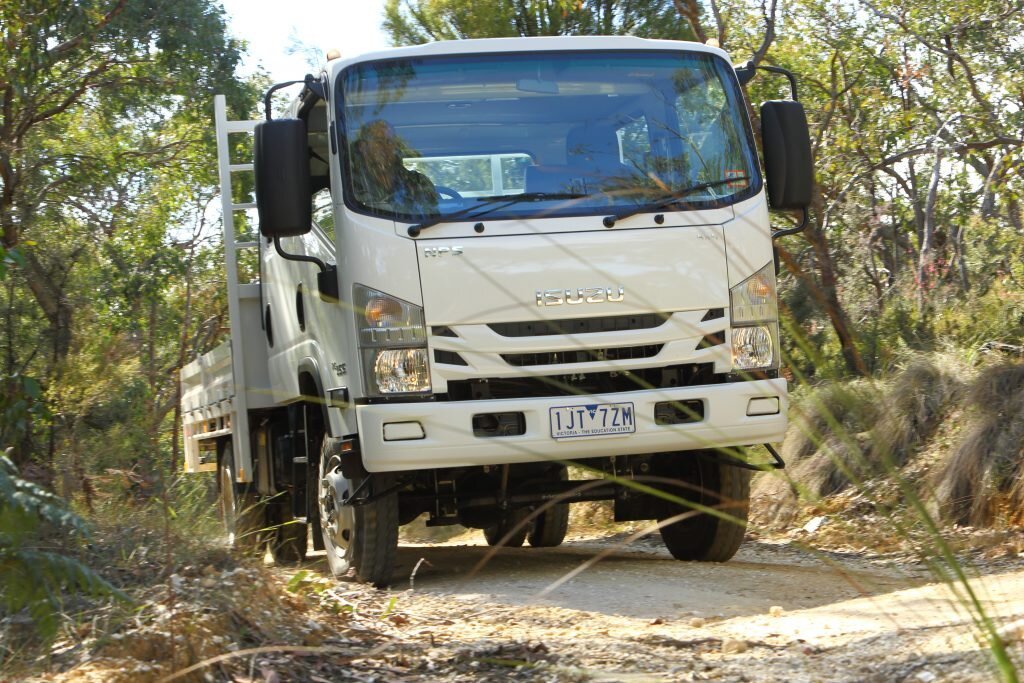
You want to be safe. You need to keep your family safe, and everybody else’s family, out there on the roads.
The best way to mitigate this disaster waiting to happen, is to minimise the mass disparity between the trailer and the vehicle.
This doesn’t really apply to short trips like to a local boat ramp, because you’re probably not going to reach high speeds.
But even at 20-40km/h off-road, you have acquired a huge amount of kinetic energy. When that energy is dispersed or transformed in a short period of time, that’s bad.
There are geometric deficiencies when driving off-road or on unsealed rural roads with 3.5 tonnes. Hitting a hole or trench or a rock or standing water - whatever - you’re going to bleed that energy away very quickly, which can easily damage something - or unsettle the whole combination.
You cannot realistically take 3.5 tonnes for severe off-roading. Pig trailers are not designed to pitch, roll and yaw in extreme ways. Sure, off-road trailers with a Treg hitch help in these situations, but they remain limited in how much punishment they can take.
Just because the specs sheet says you can tow 3.5 tonnes, that does not make it safe to do so. You need to keep the weight slow as possible to reduce the amount of energy you carry in your entourage - the more energy, the harder it is to keep under control.
In fact, using an Isuzu D-Max X-Terrain as an example, you need to leave just about everything out of the ute itself if you tow 3.5 tonnes.
With 80 kilos per person on board - which is a very modest estimate of your family’s combined bodyweight - that’s 320 kilos of human, plus 50 for the towbar plus 2130kg for the D-Max’s kerb weight, plus 3500 kilos for the caravan out the back, that equals 6000 kilos even.
That’s 50 kilos over the D-Max’s gross combination mass limit, before carrying a single item in the cab or the tray (such as Jerry cans of fuel, water containers, recovery gear), or fitting a single accessory.
Seriously, consider buying an actual truck. They come in all shapes and sizes, with 4X4, long wheelbase, quad-cabs, with tray packs, automatic transmissions, and you can even have that more appropriately de-tuned 3.0-litre 4JJ engine - or you can have a 5.4-litre version with GVM and payload figures that leave a D-Max for dead.
An Isuzu NPS murders a LandCruiser 300, a Ford Ranger, VW Amarok, Pajero Sport and even flips the bird at a RAM 2500, every day of the week. An Isuzu NPS 4X4 will move 3.5 tonnes every day of the week, including public holidays and RDOs - because it’s designed to - safely.
There are companies which will bolt what is effectively a small caravan onto the back of your 4X4 truck. These set-ups are far more tenable and dynamically safer than hauling a 3.5-tonne pig trailer behind a ute. When you consider the cost of a LC300 Sahara and a dual-axle luxury caravan, the 4X4 truck option does start to look quite reasonable. And it’s got two low-range gearsets - which is an argument stopper right there.
There are an increasing number of options for this kind of 4X4 expedition-style overland truck, including Isuzu N-Series, Mitsubishi Fuso Canter and the Hino 300 series.
If you’re not prepared to buy a truck and do this 3.5 tonne towing assignment properly, buy your ute. Just don’t tow anything heavier than 2.5 tonnes. Because physics doesn’t care if you live or die - but the cops do.
.
RECOVERY: MODES OF FAILURE
Humanity can always benefit from going back to basics. Here is a beginner’s guide to heading off into the outback to get stuck, and getting home again.
So, let’s first establish some general guidelines for recovery.
The worst designed, least reliable and most dangerous component in off-road recovery is of course the human being.
Every time, you realise just how little we’ve moved on, as a species, from the common ancestor that also gave us the apes.
Like, smart enough to build the cool toys. Dumb enough to use them so badly. #Humanity
People die during recovery. They get hit by projectiles. They get sliced open by cables or struck by broken straps >>. They get crushed by vehicles which drive over them when they run away under gravity after being freed, and nobody thought that far ahead. That happens a lot. So there is quite a serious dimension to this off-road F-U-N.
GET TRAINING
It’s absolutely a dud idea to figure out recovery for yourself. Like, lesson one, teach yourself recovery the first time you get the vehicle stuck in some preposterously shitful, precarious position. Just look confident and make it up, right? You’re kidding - that might work in a job interview; not here.
Instead, why not strap your best singlet, your stupid-est Bush Tucker Man hat and your finest thongs, and do a course with a bunch of (let’s call them) like-minded individuals.
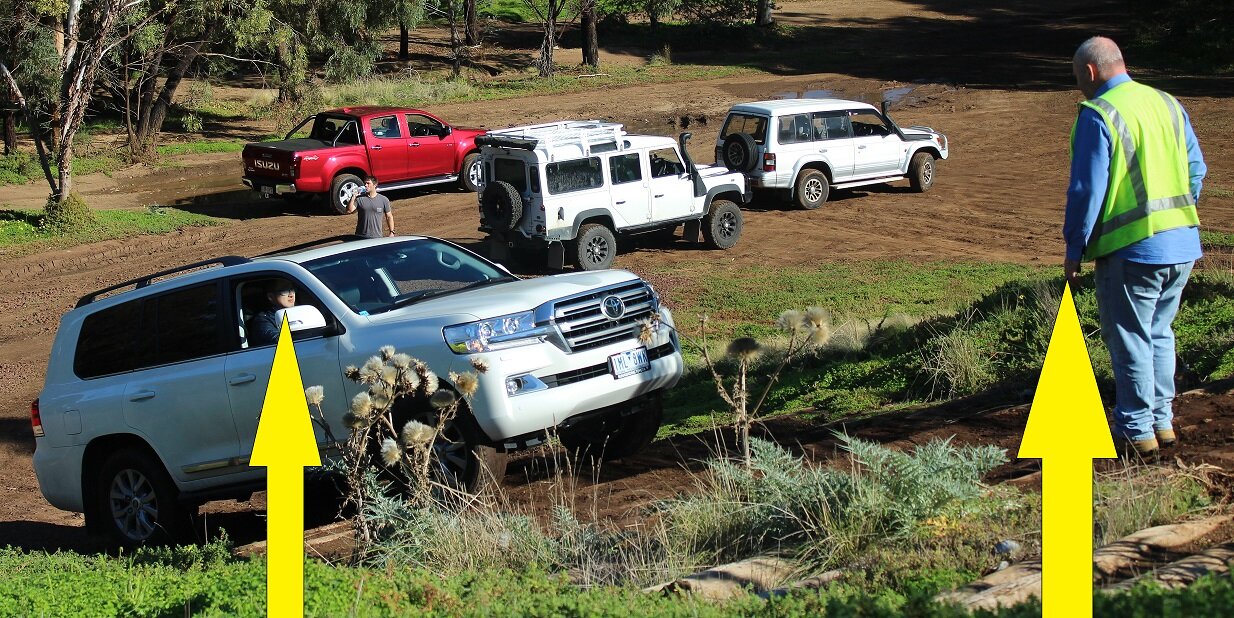
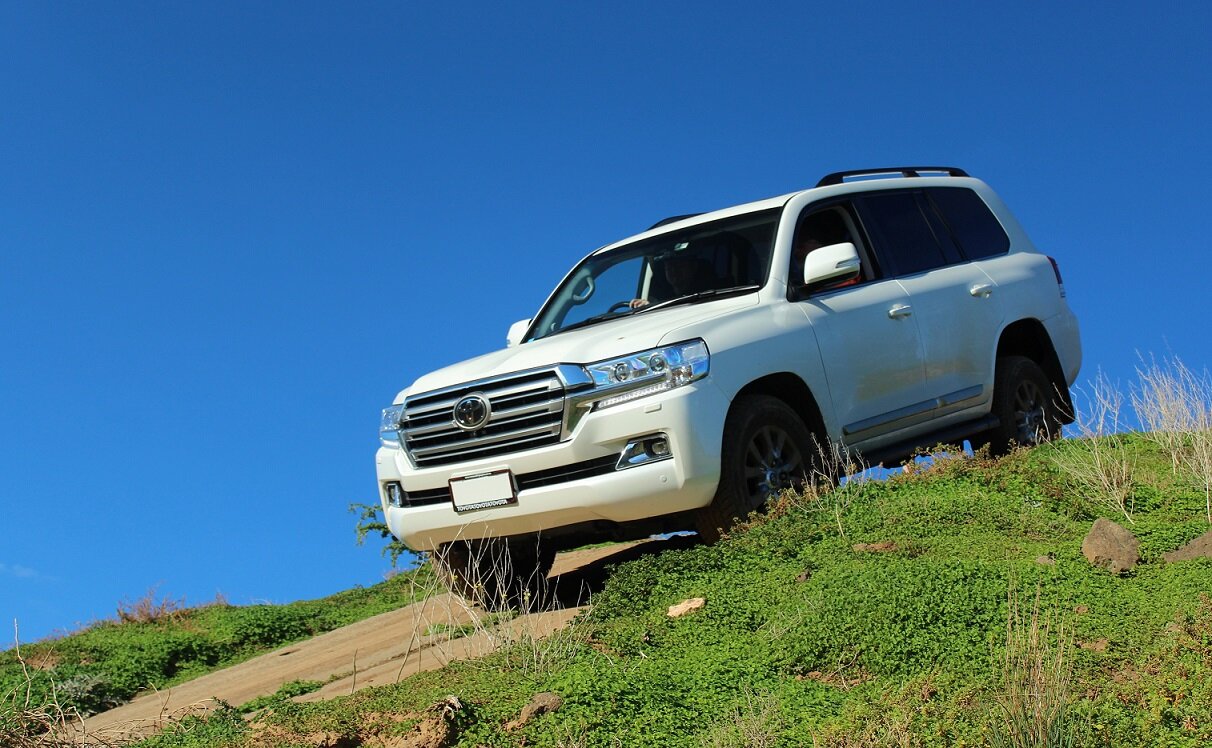
BYSTANDERS
Do I really need to say it? Recovery is not a spectator sport.
Anyone not actually un-sticking a stuck vehicle - minimum safe lateral separation: 30 metres. A winch cable cannot attempt to amputate your arm or your leg if you are further away from it, than it is long.
It doesn’t matter how long your beard is, the amazing girth of your beer gut, how faded your singlet, or how ridiculously oversized the brim on your best leather hillbilly hat. If you’re not actively recovering, get out of the way - especially kids, whom a responsible adult should mind. And don’t go downhill from the problem, because that’s generally where a runaway vehicle will go.
DON’T RUSH
Like, as soon as you get stuck, anywhere, wind it back to 50 per cent on the playback speed. Be like Neo, in The Matrix, on the rooftop, dodging those bullets. S-L-O-W.
Rushing is generally counterproductive and dangerous. You’re bogged in a 4WD near Dingo Piss Creek. You have not been engaged by a Taliban sniper. If you rush, you will only open the door to disaster.
Slow it right down. It’s just like learning the dynamics of violence, performance driving, rock climbing. (Whatever.) The worse it seems, the cooler you need to be. Slow is smooth, and smooth is fast, ultimately. (And in this case, it’s also safe.)
THROW-AWAYS
While we’re at it, throw away any damaged gear. Just replace it. Be brave, open your damn purse/wallet. Winch cable with a busted strand - just bin it. Snatch strap, tree strap - any sling with a gouge out of it, or substantially abraded - time for a new one. Don’t wait for it to snap and almost take your head off or whiplash your legs.
We’re going to assume for the rest of this report that your gear is in good order. If it’s not, then the risks are potentially through the roof.
LOW LOADS
Keep the loads low.
Recovery is a ballad best played in the lowest of low keys. Low key. Low tempo. Do a bit of shovelling. Free up that chassis rail. Break out the jack - put some packing under that low-hanging wheel (whatever). Lift things up first, to (literally) take a load off. Let’s not be letting the winch or the snatch strap do all the work.
Speaking of which, on the snatch strap front. Low key, dude. Low key. It’s not a drag race. It’s a gentle pull. Snatch straps are not ballistic devices. We’re not bungee jumping. The stretch is there for shock absorption. Snatch straps might be rated to 8000 kilos, but at 6000 kilos if the vehicle is suddenly freed, it will accelerate at two or three Gs - which is a lot faster than most cars on a drag strip.
You do not want that. Snatch strap recoveries need to be gentle. Stuck vehicle tries to drive. Recovering vehicle drives off gently. This is actually quite difficult for the majority of stupid bush hat-wearing bogans - some would say a breach of the Houso Code of Conduct.
If you’re four-wheel driving there’s actually no need to be a dickhead. So challenging. The gauntlet going down, right there.
You really are trying to minimise the opportunity for the creation of a potentially dangerous situation. Because it’s all great fun out there, until someone dies. Then it’s generally not.
THINK AHEAD
Finally: What are you going to do when the vehicle gets free? Can it run away? If so, best get in it, or get someone reliable in it so they can stop it safely … before, perhaps, it rolls into you and crushes you against a 100-year-old gum tree, where you can die of hypovolemic shock over the next few hours, much of that time in brutal, terrified, screaming agony.
Like, we’re all going to die, eventually. I get that. But I vote heavily for not like that.
.
MISTAKES
Tyre pressures
As the conditions change, you must adapt the pressures up or down. ALWAYS reinflate when you get back on the highway or on good dirt roads, even if you only do so for a handful of kilometres.
However, do not deflate unless you really have to, in general. Every situation is different but these are ballpark adaptations.
Carry a compressor and a tire plug kit. The compressor to adapt the pressures and the plug kit in case you get a puncture - and a decent tire gauge is also a great idea because if you're going to bother, you might as well do it accurately.
Get out regularly and check the tyres. Every time you get out of the vehicle, have a walk around the vehicle and just make sure that they all look okay. Take a CLOSE look - not a boy's look.
Attitude is important. Never risk it by saying ‘Screw it, it's only 15 kays, we'll reinflate when we get into town.’ That's always the harbinger of disaster. Don't take this stuff lightly. Don’t perceive 25 per cant as ‘nearly 32 or nearly 36 PSI.’
They're very different pressures and the consequences can be fatal on the wrong corner at the wrong moment and possibly with your family or friends on board, with someone else coming the other way.
Under equipped
Something that might occur to you, or which you might encounter in others out on the tracks, is newbies to the off-roading caper who are stuck and require your help.
Being under-equipped is common, but at the same time, they (or you) don’t need to completely over-pimp their vehicle simply to get started and learn the ropes before modifying or adding to their recovery gear unless it’s actually needed. Every day is a school day, after all.
So if you come across someone needing your help, there’s a chance they may not have dedicated recovery points, but instead have the default shipping tie-down points that come with their vehicle as standard. These shipping points are not suitable for recovery, generally speaking. If one of them fails at the weld, for example, they're going to hurl towards you, and that's bad.
But equally, you probably need t help them so you can get past them because they’re blocking the track, and/or it’s also the right thing to do - everybody helps everybody out there. Certainly they might have kids with them.
So the best thing to do is start digging. It’s surprising how helpful it can be to simply start removing mud and soft soil in order to dislodge the vehicle. This will also make it easier to recover the vehicle - possibly even if you have no choice but to use their shipping points. Shovelling also makes space to get rocks, logs or some kind of traction-aid boards underneath the wheels.
Packing and trolley or bottle jacks are also good options to assist in getting those packers like rocks or wood underneath the wheels that require traction.
You can also use tree trunk protectors to attach to each of the shipping tiedown points, in order to half the amount of load they’re subjected to, before using your own snatch strap or chain to pull the vehicle free. Don’t use shipping tiedown points to recover someone, but the point is to minimise risk and reduce load as best you can.
Take a bunch of recovery gear that is reliable, robust and simple, because often these are also the most affordable options. A decent long-handled spade or shovel, and digging your problems away, is a great first step in reducing the impact on all your other equipment.
Inflated ego and inexperience
There are plenty of examples you can find of people who've died when they've used towbars and towballs as mounting options for recovery, or botching some attempt at scaling a steep track, or simply losing control on some desolate, narrow in-road out in the bush.
But what happens, invariably, when this kind of event occurs is that the hardware, the roads, the weather and the vehicles all get demonised. But the driver or the person responsible rarely ever gets scrutinised.
Overloaded
If you buy a cab-chassis you then the tare weight of that vehicle is basically dead empty: no tray, no accessories and with just 10 litres of fuel. Then everything else goes into the payload.
The main problem that people have, not just with single-cab utes but with dual-cab utes generally is, when they think ‘payload’, people think that means tools and building materials in the tray, or it's the slide-on camper with all of that off-road equipment and an extra spare tyre or jerry cans of fuel.
What they don't realise is that payload is all of that stuff, PLUS the people and accessories you fit. Even adding a full tank of fuel surpasses the ‘tare weight’ and becomes the ‘kerb weight’ when you fill it with fuel. And some carmakers even try to make this hard for you to figure out by telling you the tare weight only, leaving you to guess what the official kerb weight actually is once you top it up with fuel. (Kia and Subaru do this, annoyingly.)
People as payload is important, especially in terms of payload and taking your ute or wagon off-road. If your family weighs 300kg in total (mum and dad at 100kg each, and two 50kg teenagers), that can leave some utes with only two-thirds of the official quoted payload.
Put a 300kg family into a Ranger Wildtrak V6 and you’re left with just 642kg of payload. If you hitch up a 2-tonne camper trailer with 200kg of towball download, that’s 442kgs left of payload you can add. A second spare wheels weighs 30kg, two jerry cans of diesel weighs 30kg (60kg net), recovery gear might weigh 30kg in total (90kg net; 352kg rem.), stick your luggage bags in the tray and maybe there’s 50kg for you and your missus (140kg net; 300kg rem.) - and we don’t even have any accessories on the Ranger yet. Haven’t added food either.
The point here is to know exactly how much your vehicle is going to weigh, and avoid overloading it at all costs.
CONCLUSION
You don't have to be an uninformed dickhead when you head out for adventures in your 4X4. And thinking carefully doesn’t have to be some foreign concept.
People who want to be able to take their four-wheel drive further into more challenging terrain or who want to go faster in a performance car around a racetrack, they often think they will learn as they do it more often. But we can’t always be Ayrton Senna or Roothy.
Getting training before you go off-road, from a registered training organisation such as your state 4WD association, is one of the best ways to hone your skills in a controlled environment, where you can get pointers and correct your mistakes - where the risks are low. That’s the key here.
Learning for the first time how to perform some dangerous recovery or execute some highly advanced technical driving manoeuvre when you’re 250km from the nearest hospital is a recipe for disaster.
Many people think that the only way to do off-road driving is by modification of their vehicle with every possible piece of expensive, heavy and potentially dangerous accessory their local 4WD super-centre can bolt on.
But the weakest link in both of these scenarios is often the grey matter: the programming in your grey matter - the dude hanging onto the steering wheel.
If you can update your onboard supercomputer with better software, you get greater capability without having to tinker with the hardware. This is the case with recovery, it's absolutely the case.
A better appreciation for what you’re doing, taking more personal responsibility and being accountable for the consequences of decisions (if they go wrong), like lowering the loads, doing a bit of good back-breaking hard work, it’s not only a more affordable way of off-roading, but it’s emphatically more rewarding.
It makes perfectly prudent sense to use what you’ve got, and it opens the door to using towballs, the pin in the hitch receiver, the shipping tie-down points with a tree protector strap and some chain.
All of these things are assets, they have limits (including and especially your vehicle) and it's your job to use it all in a calm, controlled and safe manner in a potentially stressful situation like getting stuck.
Ultimately, this is all about being safe while also having the time of your life out on the track. Learning as much as you can before embarking on this journey doesn’t have to be difficult or against the trend in the 4-wheel drive community.






